We remember IM Simon Webb (10-vi-1949 14-iii-2005)
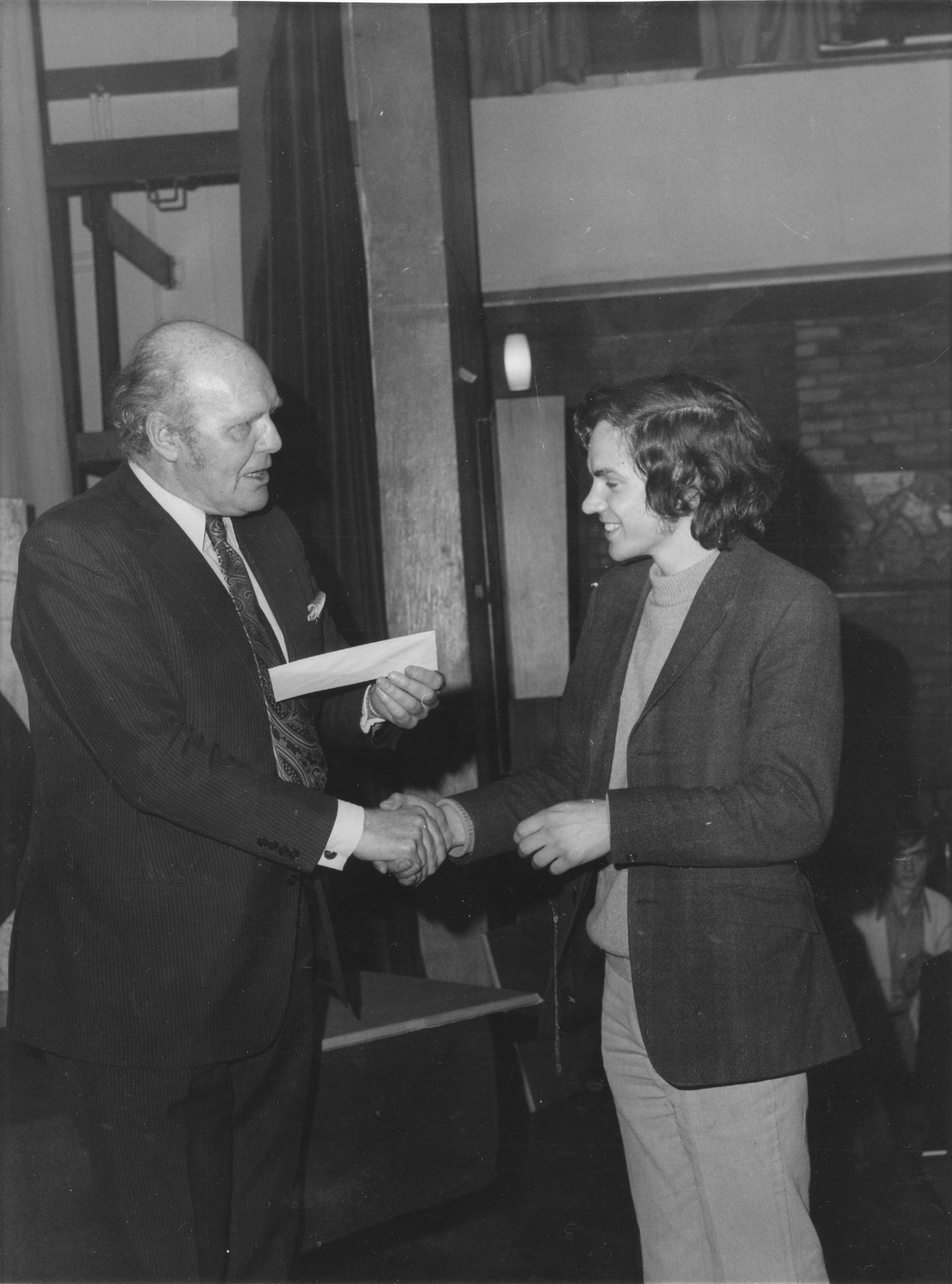
Simon became England’s fourth Correspondence Grandmaster in 1983 following Keith Richardson, Adrian Hollis and Peter Clarke.
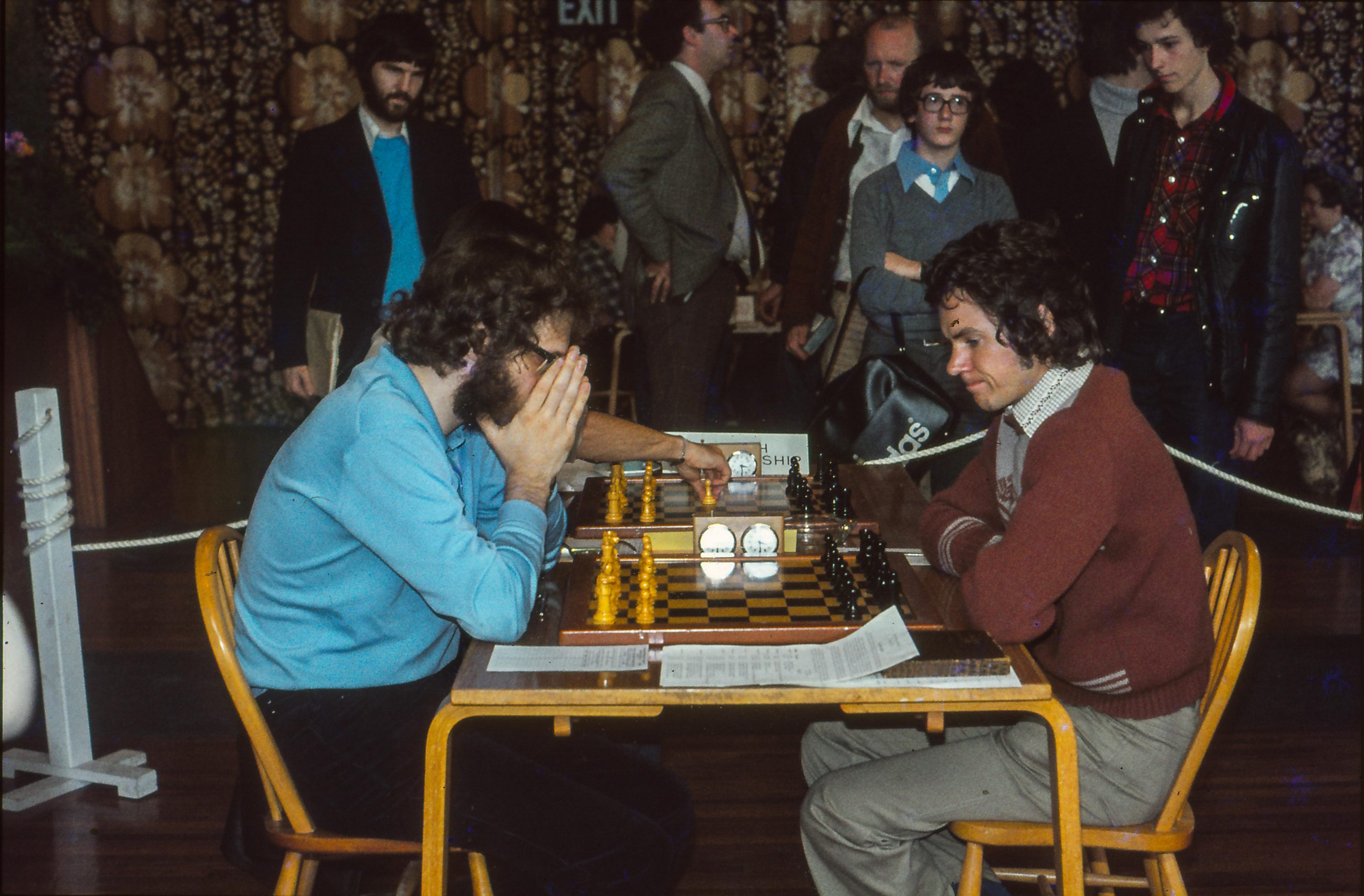
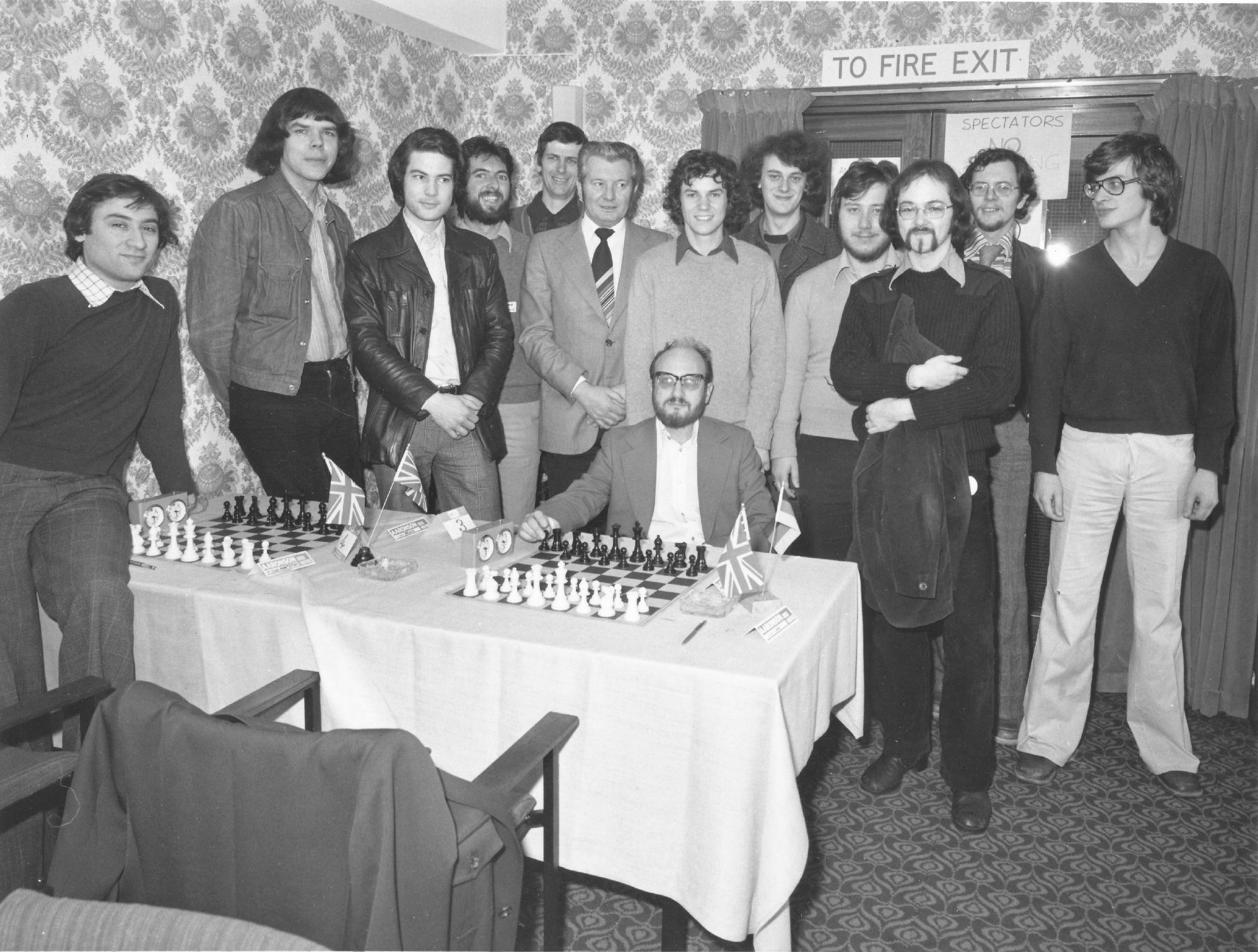

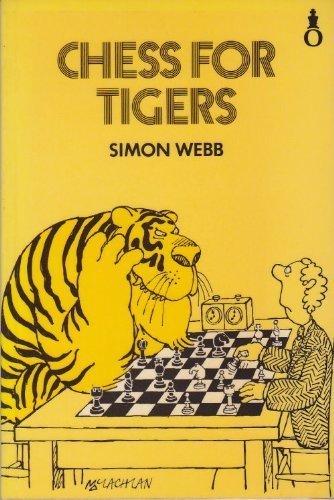
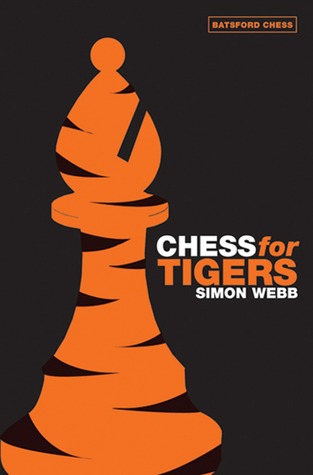
We remember IM Simon Webb (10-vi-1949 14-iii-2005)

Simon became England’s fourth Correspondence Grandmaster in 1983 following Keith Richardson, Adrian Hollis and Peter Clarke.





Remembering IM William Fairhurst CBE (21-viii-1903 13-iii-1982)
From The Anglo-Soviet Radio Chess Match by Klein and Winter :
“WA Fairhurst is a North Country man, born in Cheshire in 1903, but he has lived the best part of his life in Scotland. He has been Scottish Champion of many years running, and once captured the British Championship. In his last tournament, London, 1946 he failed to get into the prize list. He is, however, a fine tactician, original in opening play and a dangerous opponent to contend with.
By profession he is a civil engineer and has left his mark as a designer of a special framework for pre-fabricated houses.”

From The Encyclopedia of Chess by Anne Sunnucks :
“International chess master, British Champion in 1937 and Scottish Champion in 1932, 1933, 1934, 1936, 1937, 1938, 1946, 1947, 1948, 1949 and 1962.
Born in Alderney Edge in Cheshire on 21st August 1903, Fairhurst taught himself to play chess from books on the game, when he was 13, when he was 18 he won the Cheshire Championship.
His first major international success was at Scarborough in 1927, where he tied for Yates for 2nd prize, ahead of Bogoljubov, Sir George Thomas, Buerger, among others.
In 1931 he went to live to Scotland, quickly established himself as a leader of Scottish chess and played a major role in agreements between the British Chess Federation and the Scottish Chess Association. In 1932 he gave a blindfold simultaneous display, winning nine games and drawing three, in the Polytechnic Club in Glasgow, and in 1933 he drew match of six games against Eliskases.
Fairhurst has represented Great Britain in matches against Czechoslovakia and the USSR in 1946 and 1947; against the Netherlands in 1937, 1938, 1949 and 1952 and against the USSR in 1954. He also played in the Great Britain v. Australia radio match in 1947. He has represented Scotland in six chess Olympiads, those of 1933, 1956, 1958, 1964, 1966 and 1968.
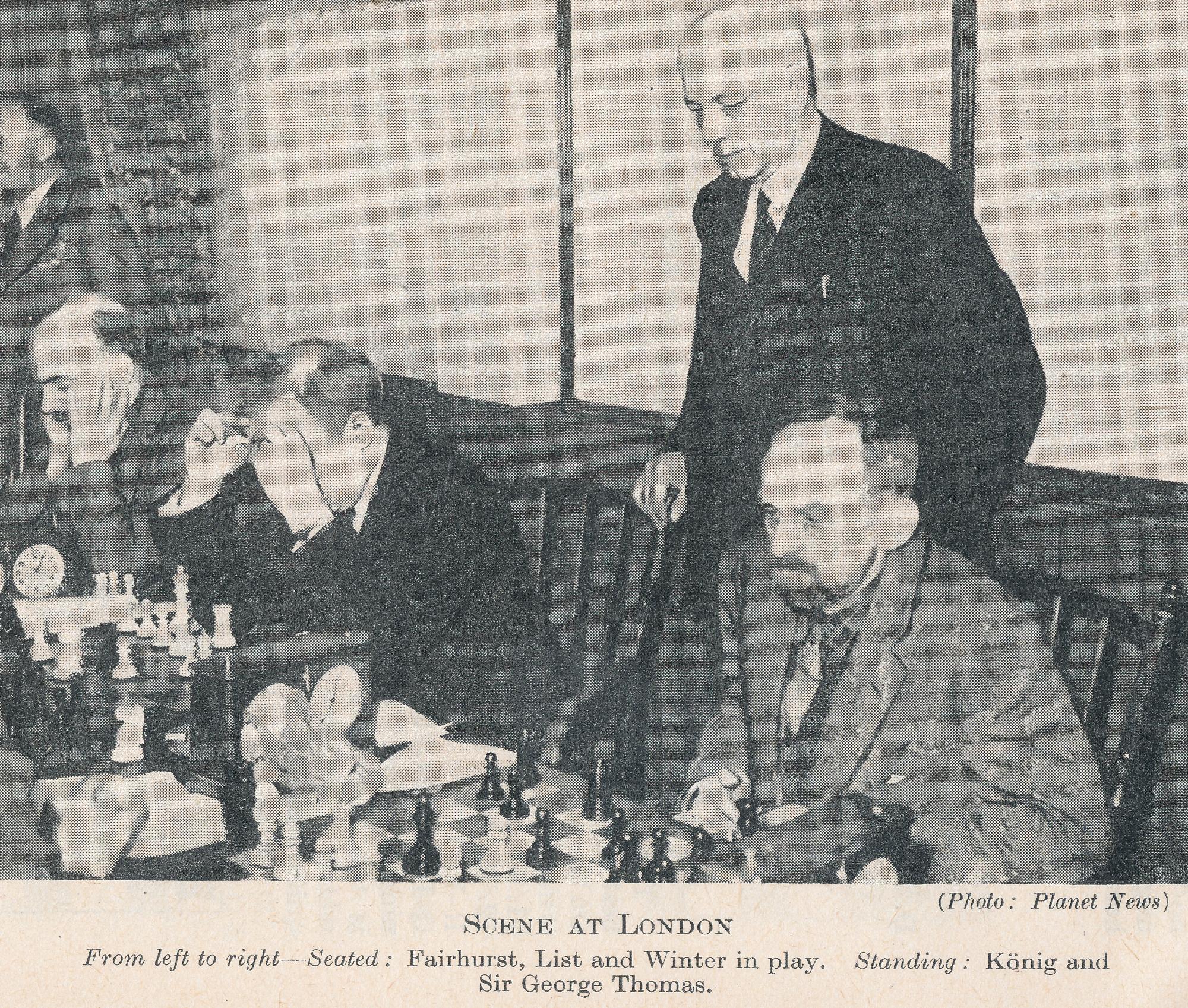
At Hastings in 1947 he came 5th and went through the tournament without losing a game.

Senior partner of a leading firm of engineers and designer of the new bridge over the River Tay at Dundee (the longest river crossing in Europe), Fairhurst was Chairman of the Scottish Branch of the Institute of Structural Engineers and author of Arch Design Simplified. He was also a member of the Royal Fine Art Commission for Scotland.”
In the March issue of CHESS for 1963, (Volume 28, Number 427, pp.147-155) William Winter wrote this:
Fairhurst, British champion in 1937, and umpteen times champion of Scotland is happily still in practice. He is a fine player well equipped in all departments of the game and would undoubtedly have done much more than he did but for the claims of business. Born in Lancashire he is now domiciled in Scotland and has become more Scottish than the Scots themselves. He caused me great trepidation during the Buxton congress in 1950, when he picked me up in his motor-car and drove at high speed down a spiral road with a precipice on one side while he declaimed about the tenets of the extreme wing of Scottish Nationalism. I have myself a good deal of sympathy, with the aspirations of the movement but I am sure this was not the way to make a convert. He still plays for Lancashire in the British Counties’ championship and it was in this competition that I met him at Manchester in 1953. I little thought as I sat down at the board that this was to be the last match-game I would ever play. I am glad to say that it was a good one.;
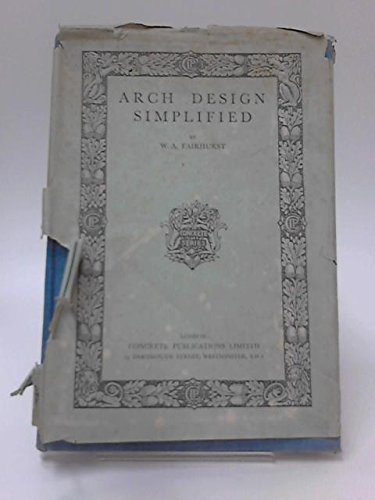
Here are his games
Here is his Wikipedia entry
According to Edward Winter in Chess Notes WAF lived at the following addresses :
Death Anniversary of William Norwood Potter, (27-viii-1840 13-iii-1895)
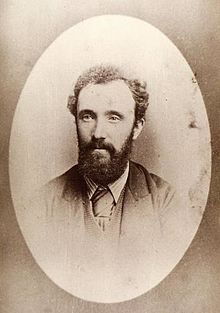
Here is his Wikipedia entry
From The Oxford Encyclopedia of Chess by Hooper & Whyld :
“Leading English player of the 1870s, barristers clerk. He met strong opposition in only one tournament, London 1876, when he took third place after Blackburne and Zukertort. In match
play he lost to Zukertort in 1875 ( + 2=8—4) and drew with Mason in 1879 ( + 5=11—5). Potter was editor of the London Chess Magazine (1874-6)
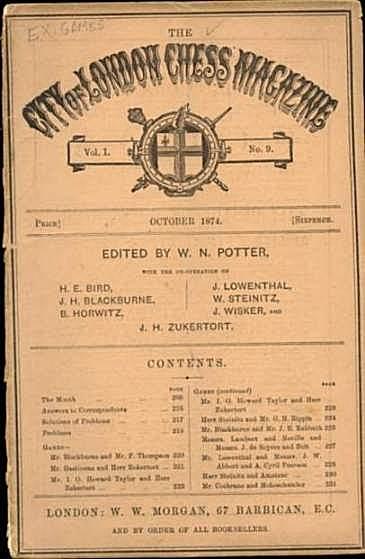
and wrote for the Westminster Papers and Land and Water, contributing annotations of a high standard to all three journals. He played a part in the development of new ideas attributed to Steinitz, with whom he established a firm friendship and to whom he may have shown the ideas of the English School (see schools of chess), in 1872 the London Chess Club, represented by Blackburne, Horwitz, Lowenthal, Potter, Steinitz, and Wisker, began a correspondence match of two games against a Viennese team led by Kolisch for stakes of £100 a side, (The moves were sent by telegraph and confirmed by letter.) Unable to accept the ideas of Potter and Steinitz, the rest of the London team soon withdrew, leaving these two to play on. They won the match. Subsequently Steinitz declared
that ‘modern chess’ began with these two games.
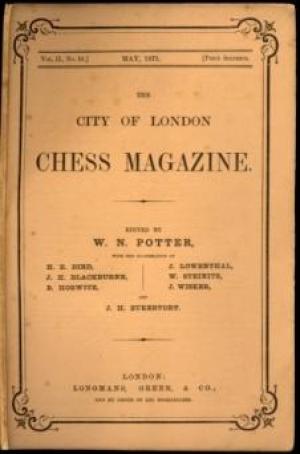
The Potter Variation in the Scotch is :
n.b. The Potter Memorial correspondence tournament was named after Reginald Potter, a past president of the BPCF.
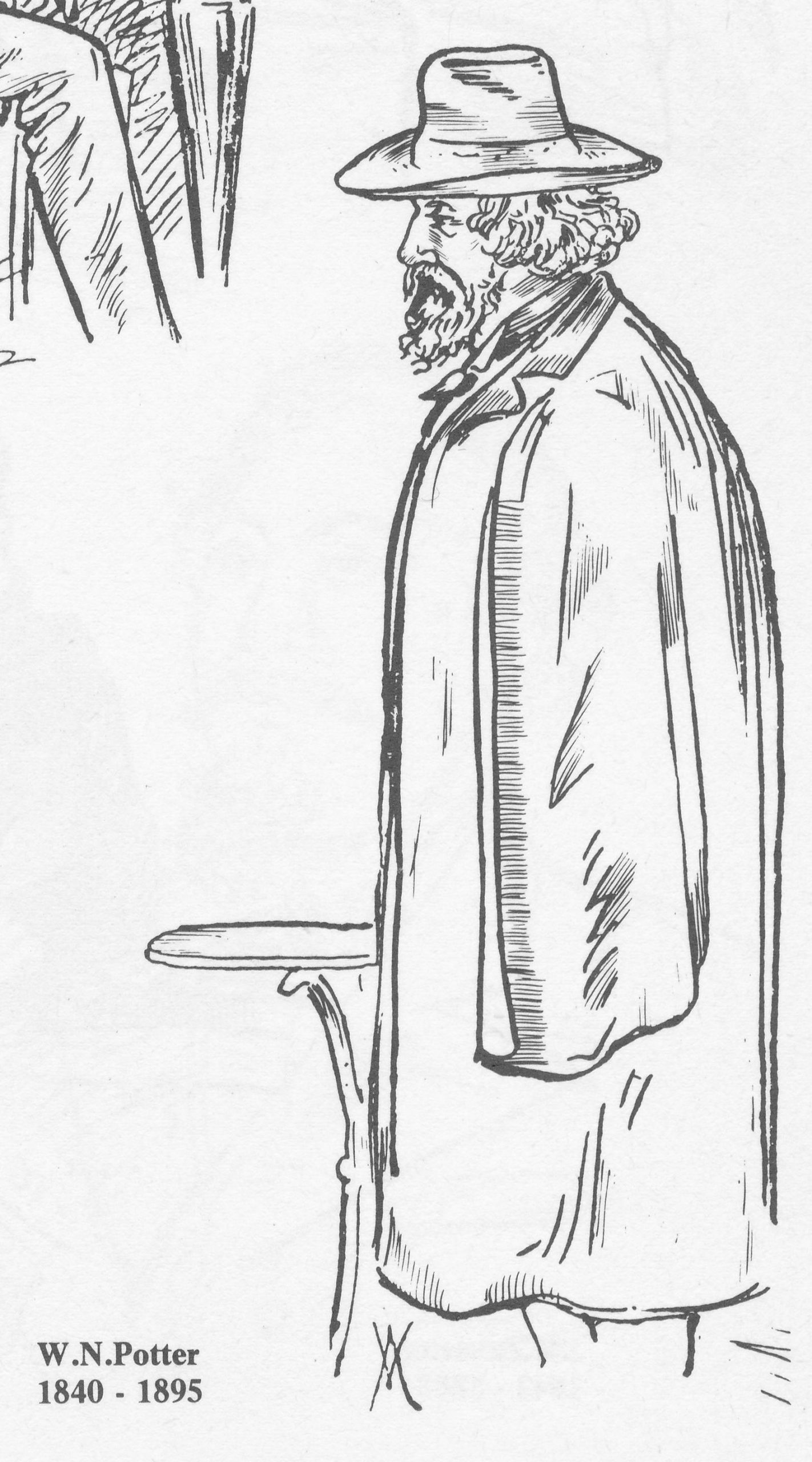
BCN remembers John Cochrane who passed away on March 2nd 1878.
From The Oxford Companion to Chess by Hooper & Whyld :
Scottish player, barrister, called to the bar in 1822. If the so-called romantic style existed then Cochrane has a claim to be regarded as its founder. A dashing player, he attacked at all costs often sacrificing pieces with abandon, a style that was successful in the England of the 1820s; but when in 1821 he went to Paris, then the world’s chess centre, he was beaten by both Deschapelles and Bourdonnais. Subsequently he studied the game but he did not change his style. In 1822 he published A Treatise on the Game of Chess, a popular book largely based on Traite des Amateurs (see Verdoni) and Lolli but with a few contributions of his own.
Although Cochrane came from an old Scottish family he led the London team in the famous correspondence match against Edinburgh, 1824-8. He persuaded his team to play the Scotch Gambit, but when London had obtained a fine position Cochrane left for India. Although the Londoners, led by Lewis, failed to carry the attack, the Scotch Gambit became fashionable for more than 15 years, and other lively attacking openings were developed.
Cochrane stayed in India until his retirement in 1869 except for one visit to England, 1841-3, when he played hundreds of friendly games against Staunton, who began by winning a large majority, Wilhelm Steinitz knew both contestants and states that their last encounter was a match of 12 games. Staunton conceding pawn and move for the first six- and that Cochrane made an even score when receiving odds but won (-1-3—2— !) when playing on even terms, John Cochrane should not be confused with James Cochrane (c, 1770-1830), co-author of a book on the Muzio gambit.
Here is his Wikipedia entry
The Cochrane Gambit is :
and the Cochrane Variation in the King’s Gambit is :
The Sicilian Defence, Staunton-Cochrane Variation is :
and the Scotch Gambit, Cochrane Variation is :
The Cochrane Defence is a drawing method for in the rook, bishop & king vs rook & king ending.
BCN remembers GM Jacques Mieses who passed away on February 23rd, 1954 aged 88. He was buried on the 25th of February at the East Ham Jewish Cemetery in Section J, Row 18, Grave 1100. We hope to update his burial record with these details when we are allowed to do so.
Jakob Jacques Mieses was born on Monday, February 27th 1865 in Leipzig in the German state of Saxony. He came to England in 1939 and was recorded in the UK Internees Index for 1939 – 1942 on 25th April 1939 :
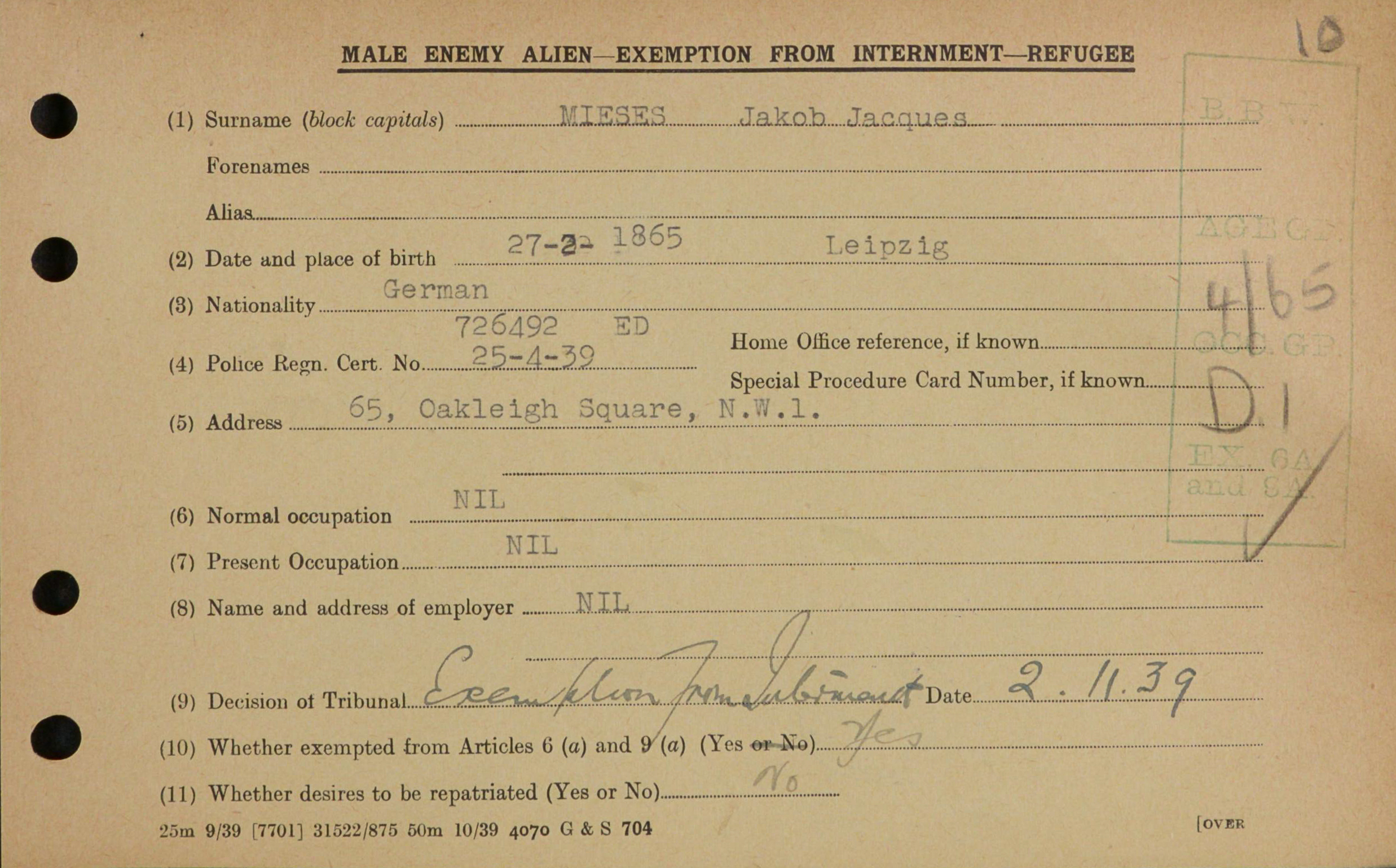
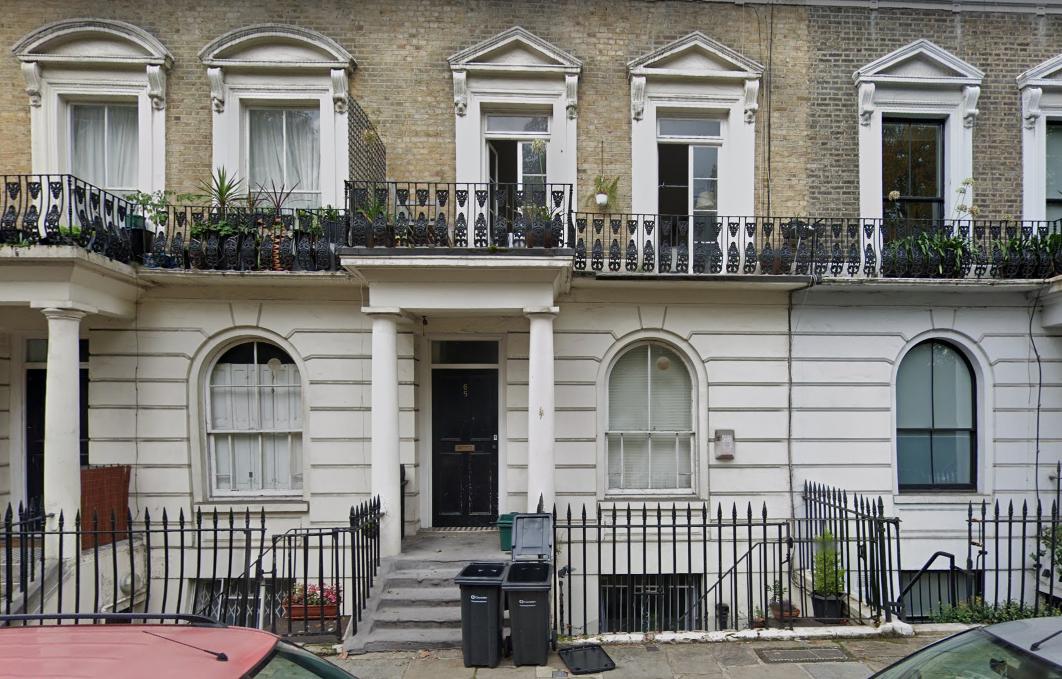
At the time of the 1939 register Mieses was recorded as living at 66, Oakley Square, St. Pancras, Camden, London, NW1 and he is listed as a Professional Chess Player.
By the time of Hastings 1945 (27th December) Jacques had relocated to :
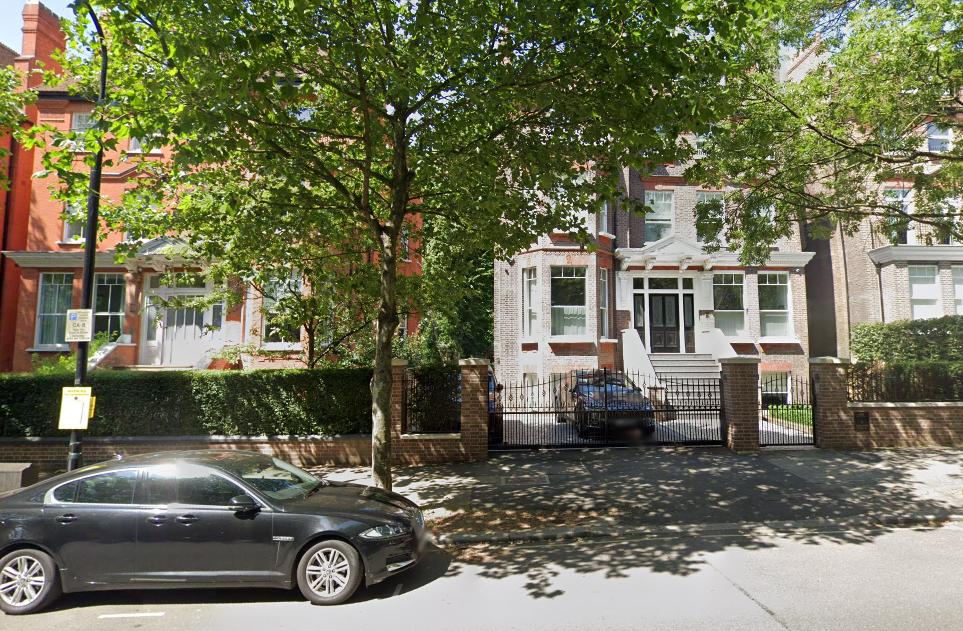
On June 7th 1947 he was granted Naturalisation Certificate AZ27326.
In 1950 he was one of the twenty-seven first players to be awarded the Grandmaster title by FIDE. He was therefore the first British National to be awarded the Grandmaster title for OTB play. The next (Tony Miles) would be twenty-six years later.
He has The Mieses Opening named after him :
which never really caught on to any significant degree.
In the Scotch Game (a favourite of his with both colours) we have The Mieses Variation :
and in the Vienna Game The Mieses Variation is :
and in the Centre Counter or Scandinavian Defence we have the Mieses Variation:
and finally, also in the Centre Counter or Scandinavian Defence we have the Mieses Gambit:
From The Encyclopaedia of Chess (Robert Hale, 1970 & 1976), Anne Sunnucks :
“International Grandmaster. Born in Leipzig on 27th February 1865, Jacques Mieses was educated at Leipzig University and in Berlin. He came to England as a refugee from Nazi Germany shortly before the 1939-1945 war and eventually became a naturalised British citizen.
The early part of his chess career was devoted mainly to the study of chess theory and to chess problems. It was not until he was 23 that his tournament career really started with a tie for 2nd place at Nuremberg 1888, followed by 3rd at Leipzig 1888.

Over the next 50 years, he played in numerous tournaments with varying degrees of success. His addiction to speculative rather than sound openings and his attempts to combine playing in tournaments with reporting them were possibly responsible for his inconsistent results. Within a few months of one of the greatest performances of his career, when he came lst at Vienna 1907, ahead of Duras, Maróczy, Tartakover, Vidmar, Schlechter and Spielmann,
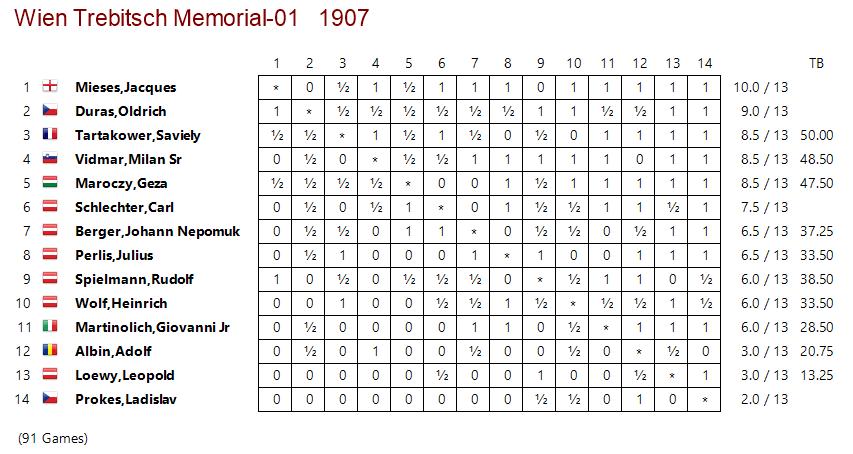
he came no higher than =16th at Carlsbad. In 1923 he achieved another great success when he came lst at Liverpool, ahead of Maróczy, Thomas and Yates.
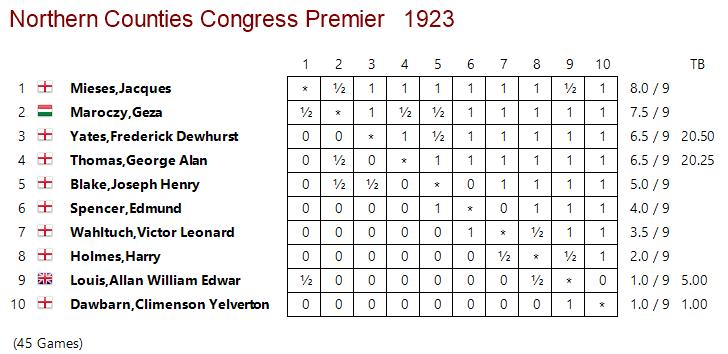
While his style of play prevented him from reaching the greatest heights as a tournament player, it was also responsible for the numerous brilliancy prizes which came his way, one of the last being at the 1945 Hastings Congress, when he was 80.
Among the many books which Mieses wrote were The Chess Pilot,
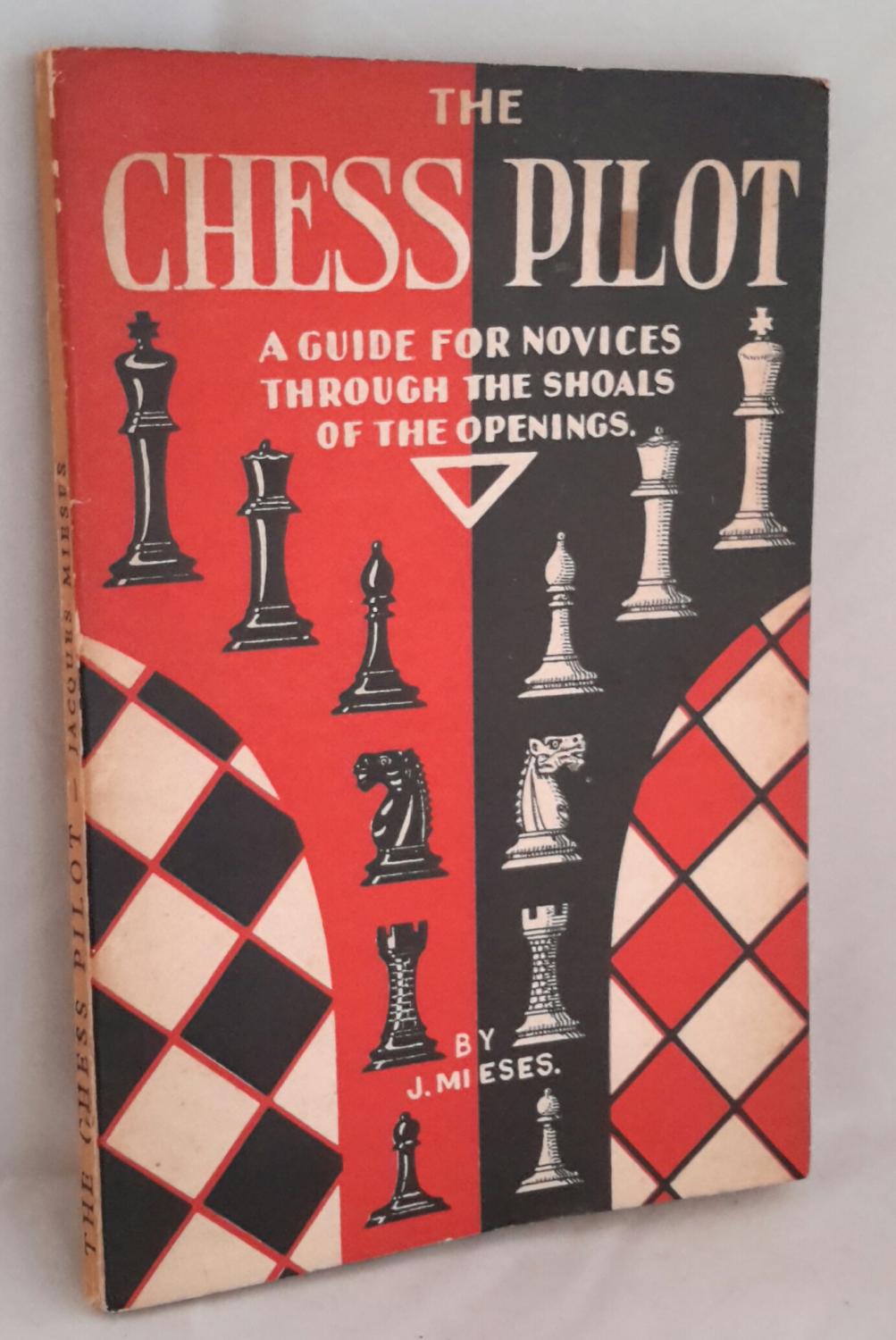
Manual of the End Game
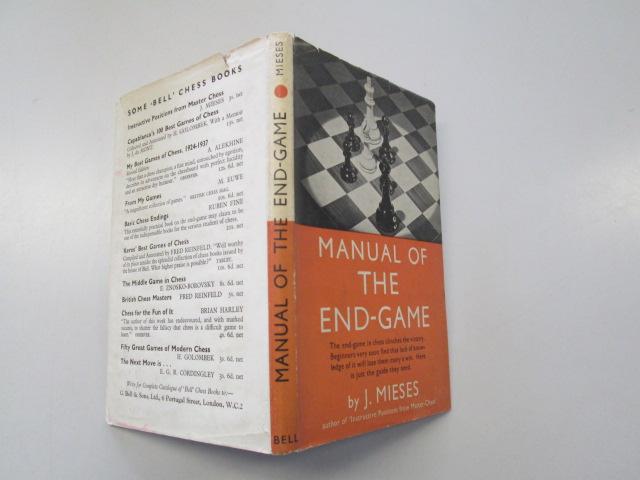
and Instructive Positions from Master Chess.
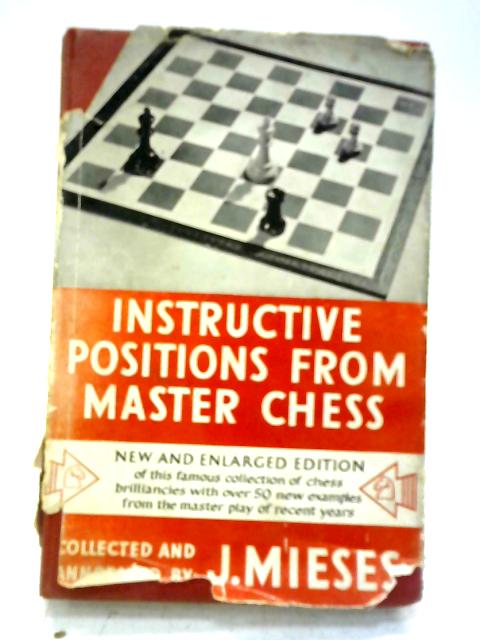
A very popular player, Mieses had a ready sense of humour. On one occasion, when he was in New York, he was asked by an American who mispronounced his name “Sind sie Mister Meises?”, ” No sir,” he promptly replied “Ich bin Meister Mieses.” On another occasion, when submitting an article in German to a British magazine, he could not resist asking ” Don’t you think my German is very good for an Englishman?”
On his eightieth birthday, a dinner was held in his honour in London and he was presented with a cheque by his numerous chess friends and admirers. The speech he made on this occasion was later quoted in most of his obituaries:
I have been told that a good many people never reach the biblical span of three score years and 10; and those who do-so some most reliable statistics assure us-are most likely to die between 70 and 80. Hence, I dare say, ladies and gentlemen, that I for one have now passed the danger zone and may well go on living for ever.
He lived for nearly nine more years, taking his daily swim in the Serpentine in Hyde Park or some open-air swimming pool, until only a few days before his death. He died in a London nursing home on 23rd February 1954 and was buried in the East London Jewish Cemetery.”
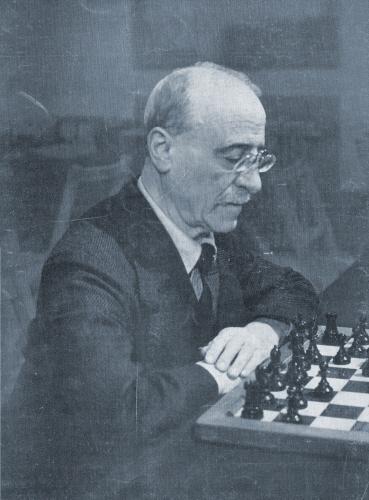
From The Encyclopaedia of Chess (Batsford, 1977) Harry Golombek OBE we have this from Wolfgang Heidenfeld :
“Grandmaster, theorist, problemist, tournament organiser and chess journalist.
Mieses was a spectacular player who won many brilliancy prizes but suffered as many very short defeats. As a a result the German master achieved only one full success in important international tournaments (Vienna 1907), but occupied good places in such events as Breslau 1889 (3rd), Hanover 1902 (4th), Ostend 1907 (=3rd), as well as some smaller events.
In matches he showed a heavy preponderance of losses against the top-notchers, losing to Lasker, Tarrasch, Rubinstein, Marshall, Teichmann (twice) and Spielmann, but he drew with Walbrodt (1894), Janowski (1895) and Caro (1897) and beat Leonhardt, Taubenhaus, and (at the age of 81) Abrahams.
Here is the first game from October 29th 1945 annotated by Mieses from his match with Gerald Abrahams played in Glossop:
In keeping with his sharp style, Mieses preferred such openings as the Vienna Gambit, the Danish Gambit and the Centre Counter-Gambit. Among his lasting achievements are his brilliancy prize games against Janowksi (Paris 1900),
Reggio (Monte Carlo 1903),
Perlis (Ostend 1907)
and Schlechter (Vienna 1908).
Personally a very witty man (and something of a bon vivant) Mieses did not invest his writing with the same sparkle; both as a journalist and author he was rather dry and sober. He edited the eighth edition of the famous Handbuch, several editions of the ‘little Dufresne’, and published several primers as well as a treatise on blindfold play and an anthology Instructive Positions from Master Chess, London, 1938.
One of Mieses’s most important contributions to chess history was the payment of travelling and living expenses during a tournament, which he insisted on when running the famous tournament at San Sebastian 1911 – it was only thenceforth that this procedure became the norm.”
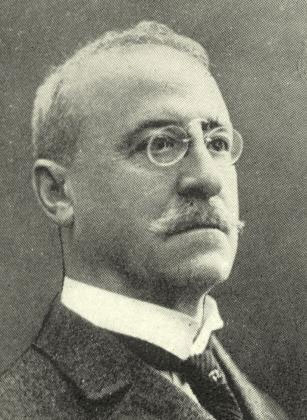
Here is an obituary written by DJ Morgan from British Chess Magazine, Volume LXXIV (74, 1954), Number 4 (April), pp. 107-108 :
Last month we made brief mention of the death, on February 23rd at a London Nursing Home, of the old grandmaster, on the verge of his eighty-ninth birthday. He was the last surviving link with a distant and largely-forgotten era. Mieses entered the international arena in the days of the great Romantics, of Zukertort, Charousek, and Tchigorin. He reached his heyday in the times of Tarrasch, Schlechter, and Maróczy. But he could never assimilate the canons of this Classical School, derived from Steinitz and codified and promulgated by Tarrasch. He preferred the dynamic to the static. He played the Scotch Game in tournaments long after it hat been
discarded by Steinitz and Blackburne; the Danish Gambit and the Vienna became in his hands instruments of great attacking potential. As Black he long favoured the Centre Counter Defence, and with it he brought off a number of thrilling victories in such great tournaments as those of Ostend, 1907, Carlsbad, 1907, Vienna, 1908, and St. Petersburg, 1909.
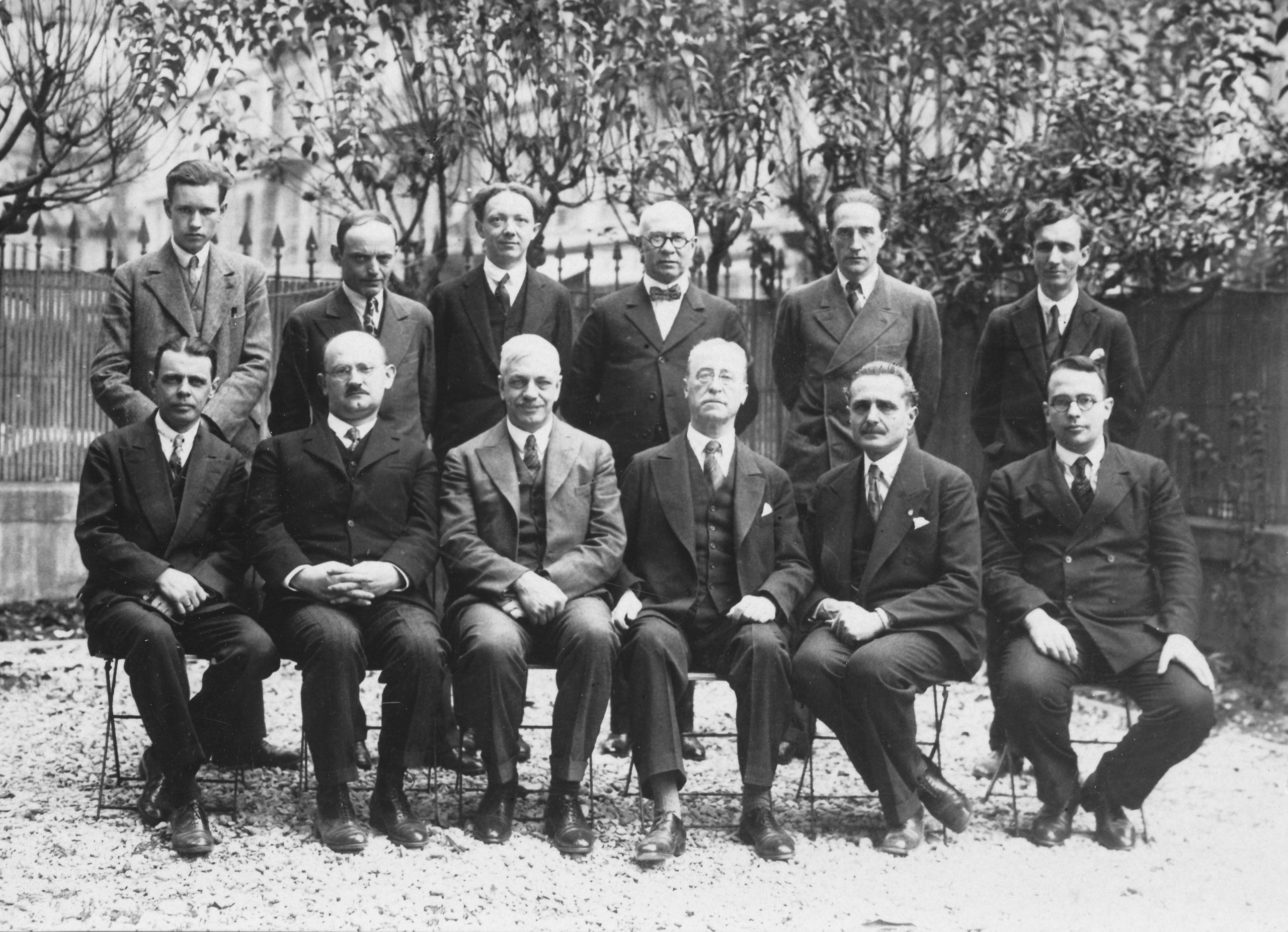
Jacques Mieses was born on February 27th, 1865, at Leipsic, and was educated at the university there, and in Berlin. In the capital he joined, at seventeen, one of the city’s chess clubs, and soon won the first prize in its annual tournament. Nevertheless, his earlier days were devoted mainly to the theoretical side of the game and to problems of which he was a good composer and a phenomenal solver. His public career really began with a tie for second place at Nuremberg, 1888, with the third prize at Leipsic in the same year, followed by a third, behind Tarrasch and Burn, at Breslau, 1889. His subsequent achievements span the years and are recorded in the literature of the game. He played at the famous Hastings 1895 (and was its sole survivor); fifty years later he played at a Hastings Christmas Congress. His preference for the speculative and the spectacular to the then ultra-modern-prevented him from winning the major prizes of the games. As we look up the record’s we can readily see how unpredictable his performances were. Thus, in 1907, a first at Vienna early in the year was followed later by an equal sixteenth-eighteenth at Carlsbad. But his Brilliancy Prizes were numerous: such endings as those v. Janowski, Paris, 1900; v. Reggio, Monte Carlo, 1903 (quoted, incidentally, as Diagram 52 in Fine’s The Middle Game in Chess, but without giving its source); v. Znosko-Borovsky, Ostend, 1907; and v. Schlechter, Vienna, 1908, will always be the delight of anthologists.
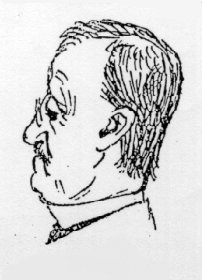
As well as playing incessantly in match and tournament, Mieses wrote copiously on all aspects of the game, analytically as well as in a literary manner, in books as well as in magazines. Three of his little books, The Chess Pilot, Manual of the End-game, and Instructive Positions from Master Chess, have enjoyed a long and wide popularity in English.
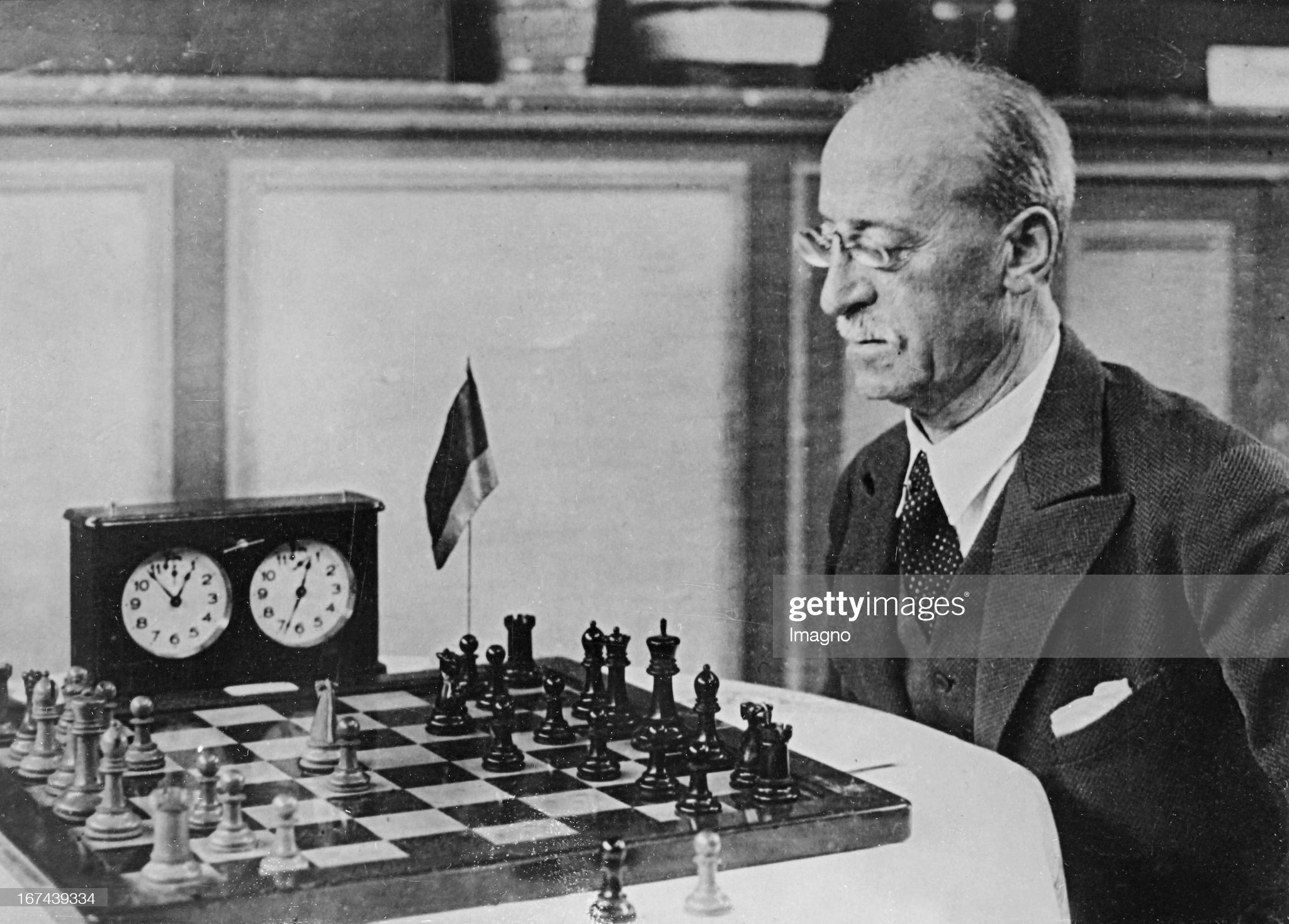
Two personal memories come to the writer’s mind. We first met him during the Liverpool congress-of 1923 ((1) Mieses, (2) Maróczy). one morning we took a stroll together up Dale Street, a stroll which developed into a tie-hunting expedition, ending up with a fine selection on his part to take back to a Germany emerging from recent disaster. He left the impression of a courteous and cultured man, precise in speech and with something of the military in his bearing. ln 1939, on hearing of his whereabouts, we called at his lodgings in Camden Town one Sunday morning. We were diffidently greeted by a seriously-crippled Mieses, who had recently, under great difficulties, made his exit from a Germany once more faced with disaster.
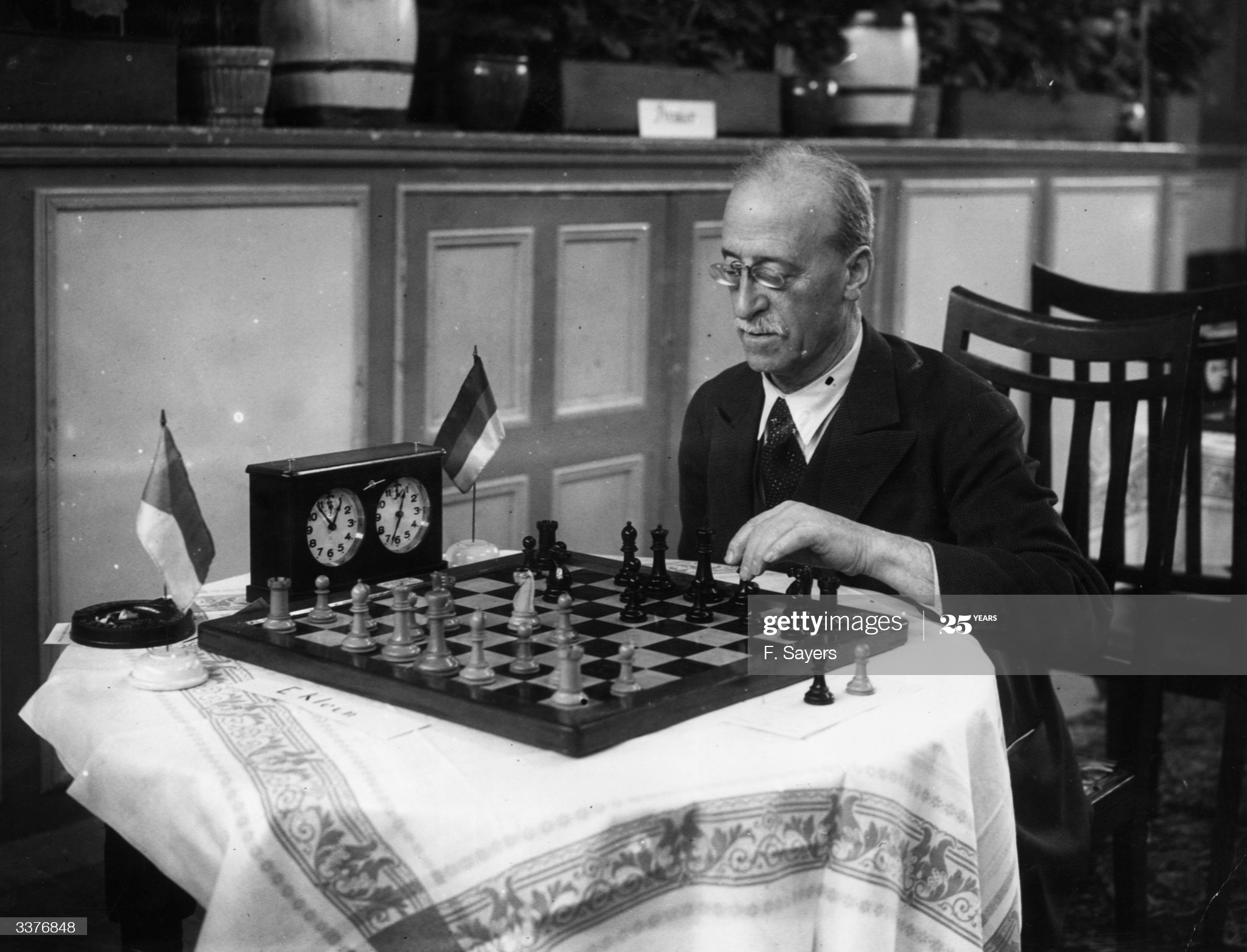
But the prim and chivalrous personality soon exerted itself. His many English friends rallied round him in his exile, all culminating in the great tribute paid to him on his eightieth birthday. Mon March 15th, 1945, at the Lud-Eagle Chess Club, a large number of friends and admirers gathered to pay their respects. A cheque, subscribed to by members of the club, was presented to the veteran master. He had, he said in his acknowledgement, sought asylum in England, and he had been shown great kindness and sympathy. The final gift was a last resting-place in the East London (Ed : we now know this to be East Ham) Jewish Cemetery. – DJM.
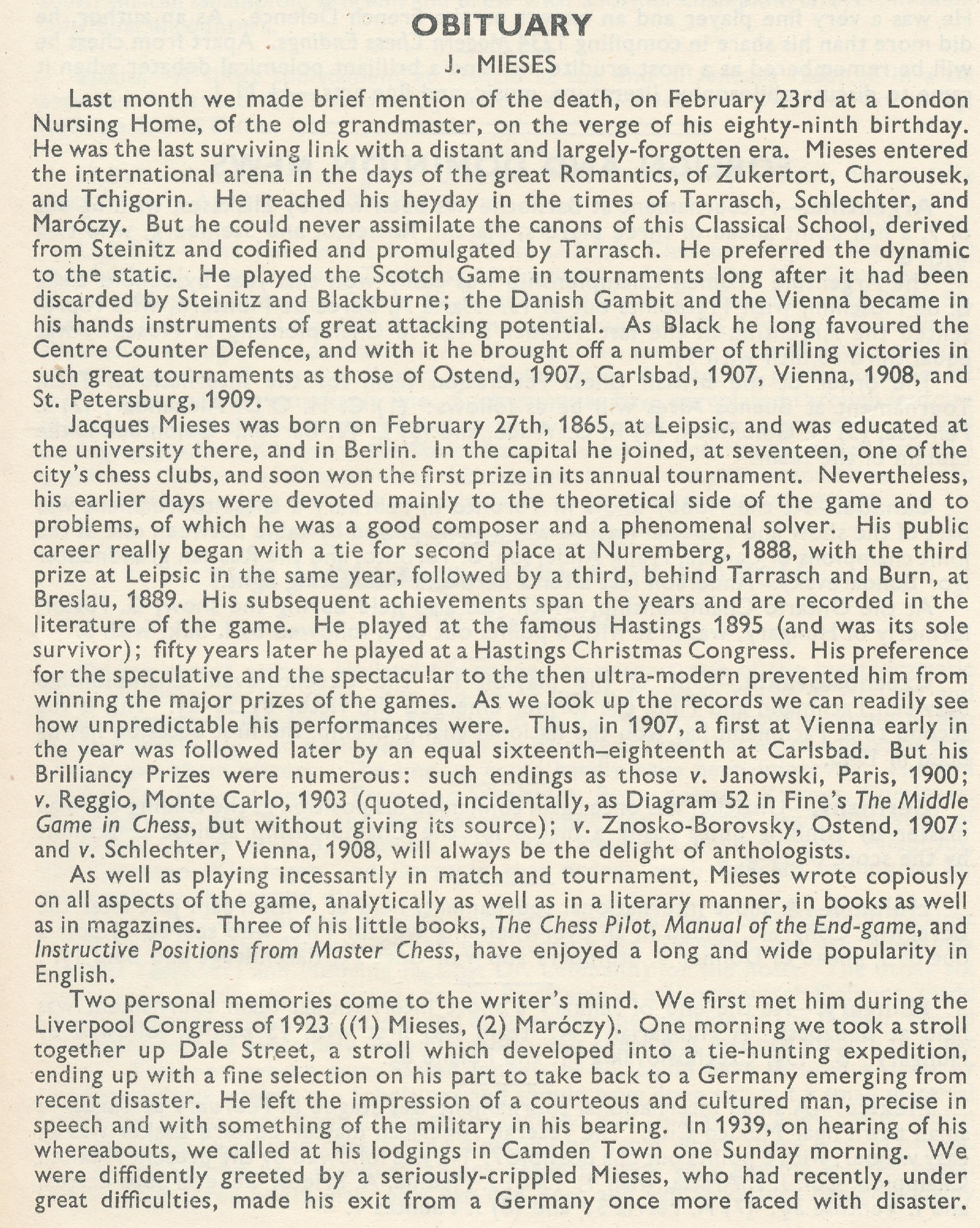


From Chessgames.com :
“Jacques Mieses was born in Leipzig. He won the chess championship of Berlin at the age of 17, and in 1888 he placed joint second at Leipzig and third at Nuremberg.
In 1889 he came third at Breslau (1889). He was, however, rather eclipsed by two great emerging talents – Emanuel Lasker and Siegbert Tarrasch. Mieses was crushed by Lasker in a match – Lasker – Mieses (1889/90) in Leipzig (December 1889 to January 1890). He also performed poorly at 8th DSB Kongress (1893) coming only 7th out of 9 against a field which was relatively weak compared to previous DSB congresses.
1894-95 was a busy period for Mieses. He drew a match with Karl August Walbrodt. (+5, =3,-5) in Berlin (May-June 1894). Mieses then played in the extremely strong 9th DSB Kongress, Leipzig (1894) (3rd-14th September, 1894) coming 10th out of 18. He had then toured Russia giving simultaneous displays, before travelling to Paris to play a match with David Janowski (8th January to 4th February 1895).
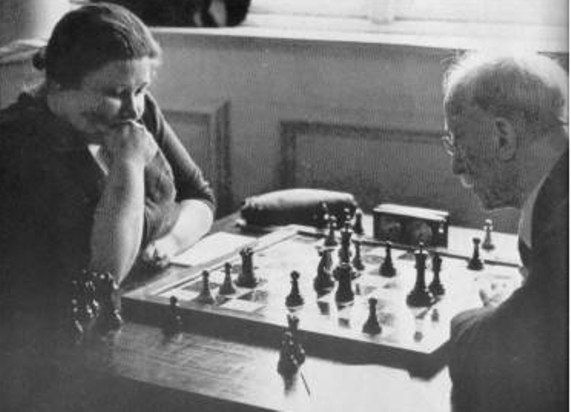
Mieses then crossed the English Channel to play a short match against Richard Teichmann in London (16th – 21st February 1895) which he lost by +1 =1 -4. A month later he played this match, Mieses next professional engagement would be (which was his first tournament outside his own country) came at the famous Hastings event of 1895. Although he finished only twentieth (in a field of 22 players), he soon adapted to this level of play and in 1907 he took first prize at the Vienna tournament scoring ten points from thirteen games.
In 1909, Mieses played a short blindfold match with Carl Schlechter, winning it with two wins and one draw. The very next year Schlechter played Emanuel Lasker for the World Championship and drew the match 5-5.
Mieses tried his hand as a tournament organiser in 1911, putting together the San Sebastian event that marked the international debut of future World Champion Jose Raul Capablanca. Mieses was defeated by one of Lasker’s title challengers, Siegbert Tarrasch, in a match in 1916 (+2 -7 =4). In 1938 Mieses resettled in England and took British citizenship. He was awarded the grandmaster title in 1950.”
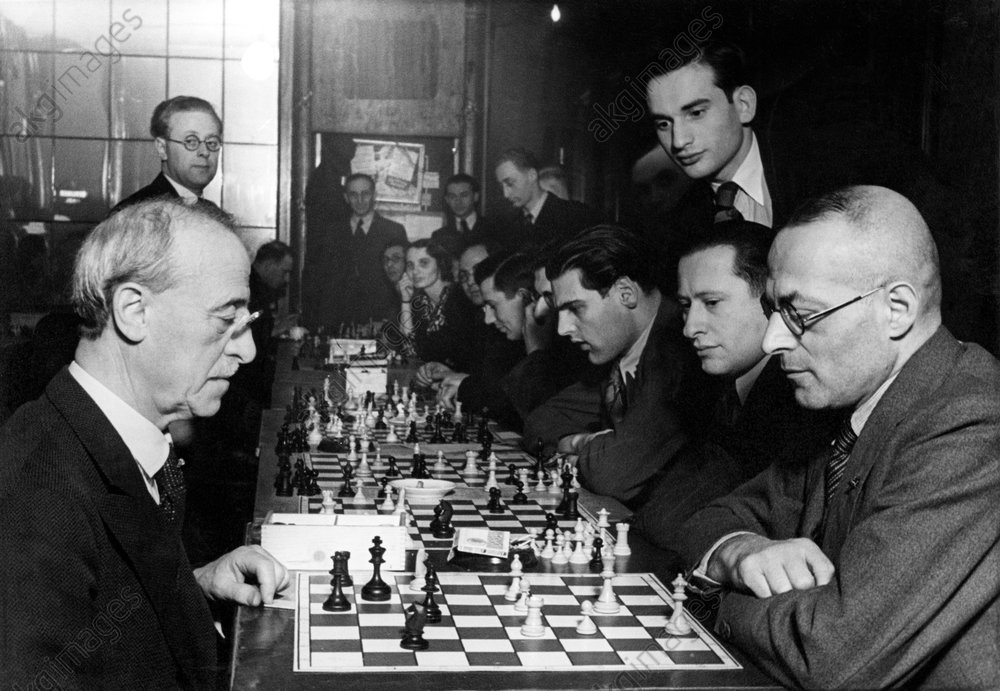
From The Oxford Companion to Chess by Hooper & Whyld :
German-born Jewish player and author from Leipzig, International Grandmaster (1950), International Arbiter
(1951). He never assimilated the positional ideas of Steinitz and Tarrasch; instead he preferred to set up a game with the direct object of attacking the enemy king, a style that brought him many brilliancy prizes but few successes in high-level play. His best result was at Vienna 1907, the first Trebitsch Memorial tournament, when he won first prize ( +9 =2 —2) ahead of Duras, Maróczy and Schlechter. Later in the year he shared third prize with Nimzowitsch after Bernstein and Rubinstein in a 28-round tournament at Ostend. He played 25 matches, mostly short, and won six of them including a defeat of Schlechter in 1909 (+2-1).
Mieses reported chess events, edited chess columns, and wrote several books. In 1921 he published a supplement to the eighth edition of Bilguer’s Handbuch, and he revised several editions of Dufresne’s popular Lehrbuck des Schachspiels, He also organized chess events, including the tournament at San Sebastian in 1911 for which he insisted that competitors were paid for travel and board, a practice that later became normal.
After living in Germany for 73 years he escaped the clutches of the Nazis and sought refuge in England. A prim, courteous, and dignified old gentleman, still upright in bearing, he became widely liked in his adopted country. Asked about his lameness in one leg, caused by a street accident in 1937, he merely answered ‘it was my turn to move,’ Soon after naturalization he became the first British player to be awarded the International Grandmaster title. A generation before him his uncle Samuel Mieses (1841-84) had been a German player of master strength.
In the various publications of Edward Winter there are many and varied references to Mieses. We recommend you consult : Kings, Commoners and Knaves, Chess Facts and Fables and Chess Explorations to read them.
According to Edward Winter in Chess Notes JM lived at the following addresses :
Here is an article by André Schulz of ChessBase
An excellent article from Edward Winter.
Here is his Wikipedia entry.
We remember John Frederick Keeble who passed away on February 19th 1939
From The Oxford Companion to Chess by Hooper & Whyld :
Problemist and chronicler who lived in Norwich all his life. He edited the chess column of the Norwich Mercury from 1902 lo 1912, contributed many significant articles elsewhere, investigated a number of chess questions, and established the burial place of several great players and arranged the tending of their graves. He lived at only two addresses for 73 years, worked for the railway company for 53 years, and was a member of the Norfolk and Norwich chess dub for 61 consecutive years. Winner of the club championship in 1884, he did not compete again until 1933 and then won it three years in succession.

Here is his (italian) Wikipedia entry
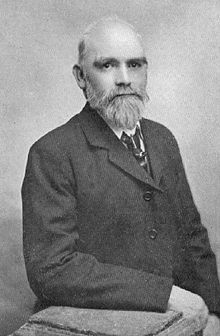
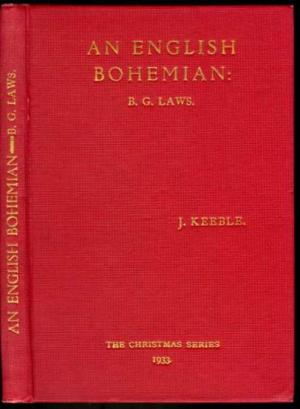
We remember Hugh Alexander who passed away on Friday, 15-ii-1974. The death was registered in the Borough of Cheltenham. Currently his burial / cremation site is unknown.
Conel Hugh O’Donel Alexander was born on Monday, April 19th, 1909 in Cork, Munster, Republic of Ireland.

Hugh’s parents were Conel William Long Alexander (1879-1920) and Hilda Barbara Alexander (née Bennett) (1881-1964) who married in Hook Church, Hampshire. His father was a Professor of Civil Engineering from County Donegal and his mother was the daughter of a timber merchant and was from Birmingham.
Hugh’s father moved to Hook in Hampshire. At some point they returned to Cork and then relocated to Birmingham.
In the 1911 Irish census aged two Hugh was recorded as being a Presbyterian. The household consisted of his father, mother and two servants Maud McAuliffe (19) from County Cork and Johanna Hanlon (20) from Cork City all living at 20, Connaught Avenue, Cork.
At the time of the census all members of the household were capable of reading and writing apart from Hugh who was recorded as “cannot read”.
and Hugh’s father signed the Return as follows :

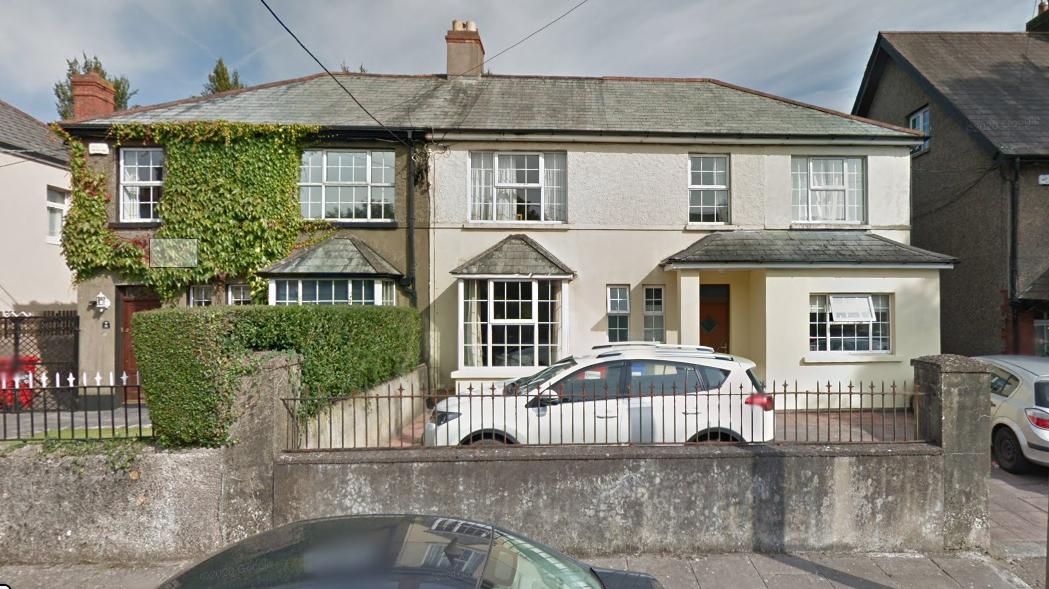
Hugh attended Londonderry College and then went to King Edward’s School, Birmingham.
Hugh married Enid Constance Rose Crichton Neate (1900-1982) in October 1934 and the marriage was registered in the district of Westminster, Middlesex.
According to Rodric Braithwaite :
“Enid, was an equally striking personality. She was descended from one of the defenders of the Eureka Stockade, the “birthplace of Australian democracy”. She was educated at the Sorbonne, a formidable dialectician, art historian and collector. In her later years she returned to Australia, where she was endlessly hospitable to passing Russian chessplayers, and to itinerant musicians, including my own father.”
Hugh and Enid had a son Michael (19 June 1936 – 1 June 2002) who became the foreign policy secretary to Margaret Thatcher and the UK ambassador to NATO. Here is Michael’s obituary.
Michael married Traute Krohn. Michael and Traute gave Hugh a grandson, Conel Alexander who is a Cosmochemist at the Earth and Planets Laboratory, Carnegie Institution for Science, Washington.

We contacted Conel and he replied more or less instantly as follows:
I don’t have that many anecdotes or photos of my grandfather. My great aunt, his sister, was the family archivist. She had a lot of photos of when they were young in Cork and Birmingham. She did send me some photos before she died, but not the sort that would interest your readers. She lived in Fort Erie, Canada and my grand father used to visit when in North America on ‘business’. I don’t know how much she knew about what he did but she must have had some inkling. Unfortunately, since she died I have lost touch with her family. Amongst the photos she sent me were some of my great grandfather and his Irish relatives. An archivist at Cork University contacted me a few years ago. According to him, my great grandfather has a rugby player and organizer of Irish rugby (as well as an engineering professor), but also opposed to Irish independence which might well have caused trouble for him and his family had he not died when he did.
I was 13 when my grandfather died and wasn’t told how ill he was until almost the end. I would have liked to have know him better, but I assume he was always on the go and my father was a diplomat and we had been living abroad until I was 8 (US, Moscow and Singapore). Even after moving back to London, we would only see him a few times a year as far as I remember. I think he probably realized that he had missed out on some things as he was planning to retire (early I believe) and come to live with us in London, only to learn that he had terminal cancer.
It just so happened that next door to where I work is a rather upscale retirement home. A man called Authur Levinson had retired there with his wife. He was sent to Bletchley when the USA joined the war and had worked with my grandfather. Arthur’s wife had somehow followed him to the UK as a driver. Both had gotten to know my grandfather during the war and then afterwards when Arthur joined the NSA. Somehow Arthur found out I was working next door, and my family used to visit them occasionally. They had an Enigma machine that they used to show my kids, but they were probably too young to understand the significance. Arthur told me that the NSA had tried to recruit my grandfather when they heard he was retiring from GCHQ, but he was adamant that he wanted to retire to spend more time with family and to write.
I was told that, rather surprisingly, he didn’t think that chess was a suitable pastime for a healthy boy. I don’t know if this was the reason, he believed in trial by fire, or he just could not help himself (he was extremely competitive at everything he did), but when we did play chess a few times he used to give me huge advantages and then thrash me! After a few such humiliations, I gave up. I don’t think I would have been very good anyway and my grandfather probably recognized that, so perhaps it was his way of letting me find out early. My father was an olympic fencer, so naturally I tried that too. For a while I was able to ‘bully’ my way to wins, until I came up against people who really knew what they were doing. I abandoned that too.
One other thing I learned about about my grandfather fairly recently is that he taught Freeman Dyson mathematics and chess at Winchester. Freeman contacted me out of the blue having come across my name somehow. Remembering my chess experience, I ventured that he must have been a rather impatient teacher. Not a bit of it, apparently, but then Dyson must have been the ideal student for him.
Prior to the second world war Alexander was officially employed by John Spedan Lewis in his Department store in Oxford Street. When he returned from Buenos Aires (“good air”) from the 1939 Olympiad he travelled aboard the RMS Alcantara. Here is the entry in the passenger list for September 19th, 1939 :
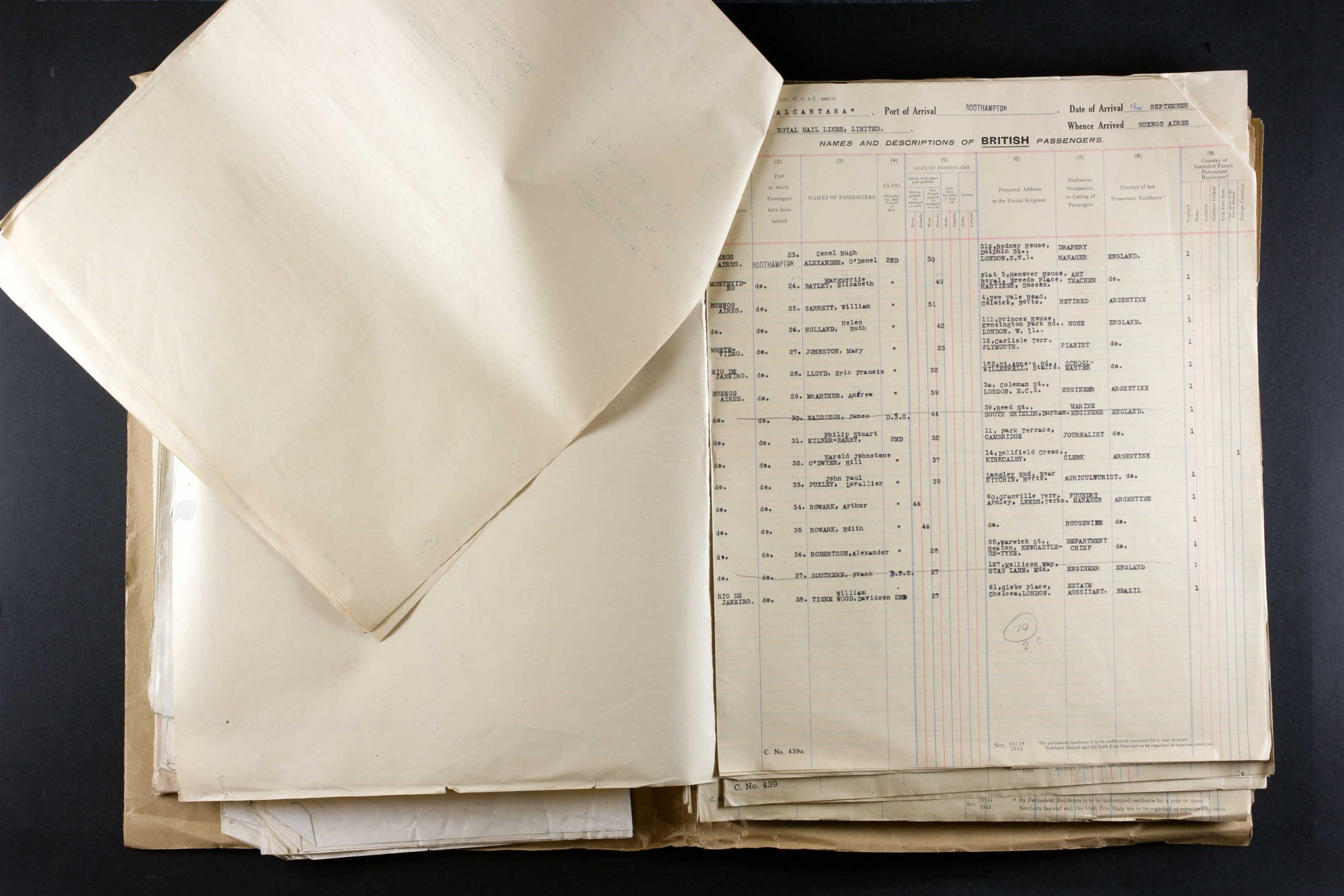
and here is Alexander’s entry in detail. Note that his occupation is described as “Drapery Manager” :

Hugh sailed from Buenos Aires, Argentina in September 1939 to arrive at Southampton September 19th 1939. The ship was the Alcantara operated by Royal Mail Lines Ltd hence the RMS Alcantara.
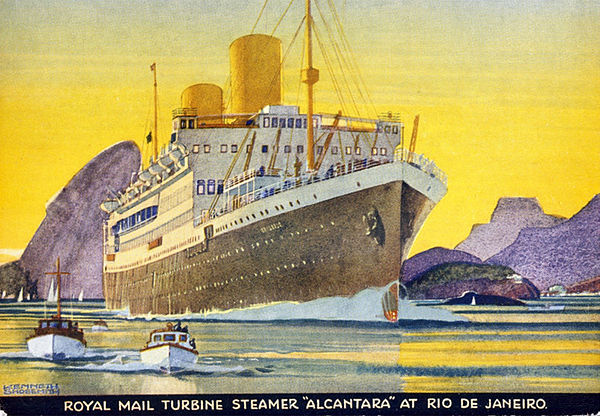
According to Wikipedia : “RMS Alcantara was a Royal Mail Lines ocean liner that was built in Belfast in 1926. She served in the Second World War first as an armed merchant cruiser and then a troop ship, was returned to civilian service in 1948 and scrapped in 1958.
Ports of the voyage were : Buenos Aires; Montevideo; Santos and Rio de Janeiro and Hugh’s official number was 148151 and he travelled 2nd class. His proposed destination residential address was
316, Rodney House, Dolphin Square, London, SW1
According to Wikipedia : “The proximity of Dolphin Square to the Palace of Westminster and the headquarters of the intelligence agencies MI5 (Thames House) and MI6 (Vauxhall Cross) has attracted many politicians, peers, civil servants and intelligence agency personnel as residents.”
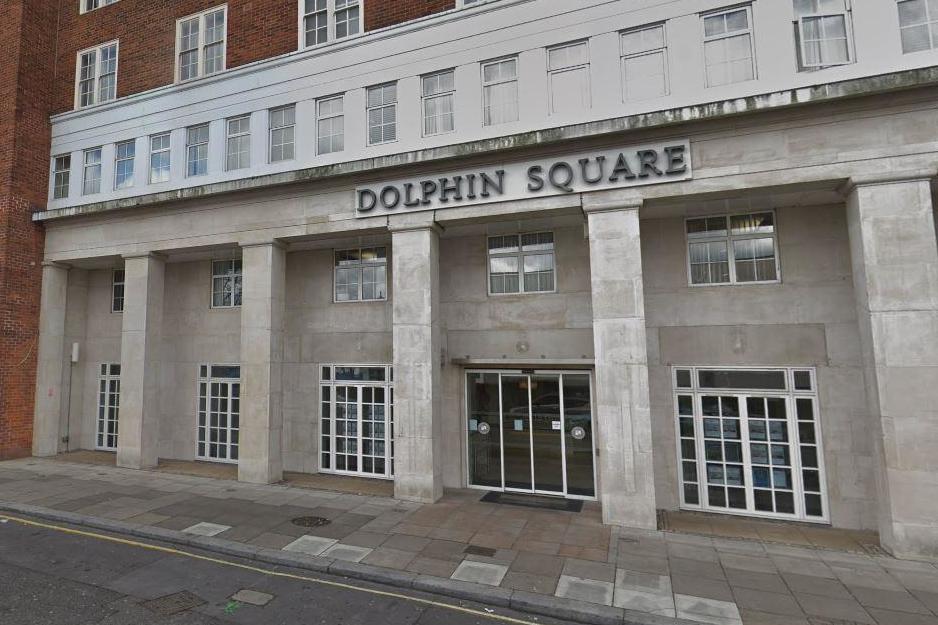
There was some discussion of Drapery Manager in another place.
From British Chess Magazine, Volume XCIV (94, 1974), Number 4 (April), pp. 117-120 by PS Milner-Barry :
“A proper assessment of Hugh Alexander, who died on February 15th 1974 must await a later issue. But I think he might have been pleased to see our last game published, and I give the score of it below, with notes based on our usual analysis immediately after the game. Over the past 45 years, ever since he went to Cambridge, we played whenever opportunity offered serious games with clocks.
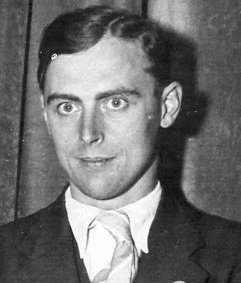
Before the war they were played mostly at my mother’s house in Cambridge, and after the war and my own marriage at our house in Blackheath. When he moved to Cheltenham the opportunities became fewer but no year ever passed without two or three such games, usually at Easter or Christmas.
Alexander always used to say, it was certainly true of me, that this was the kind of chess that he enjoyed most. The games were conducted with the utmost vigour, though not without a good deal of propaganda on both sides. I suppose he won in the proportion of about two to one, but the disparity in strength never became one-sided. Nearly all the games opened 1 P-K4, P-K4; he played the Lopez when I allowed him. (I usually played the Petroff or Philidor), and I played a mixture – in the early days the Vienna and latterly mostly the King’s Gambit. On the whole Black did better than White for both of us.
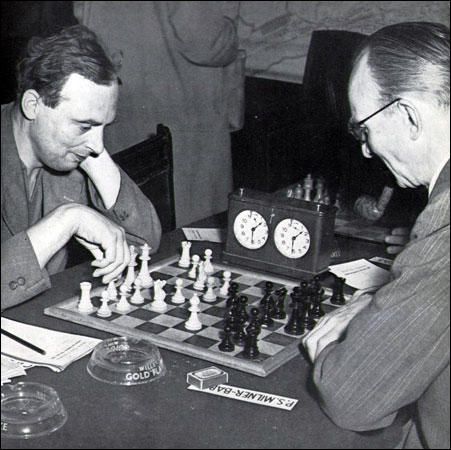
The only concession we made to advancing years was that latterly we contented ourselves with four hour sessions and 36 moves, instead of 40 in 5 hours. We thought we had done enough for honour by then, and the games were usually finished in the time.
Hugh stayed with us the weekend before Christmas, when this game was played. He looked ill, but he was very cheerful and as good company as ever. He loved a good argument, and as my family so too,- the evening meal was its usual lively affair! I am myself a man of peace, and intellectually lazy; so in deference to my feelings the argument was suspended, before it became too hot. I am afraid they all thought I was a spoil-sport. It was as happy a visit as any of us could remember and it is difficult to accept there will not be another.
As for the game, it was not one of our most exciting encounters. But it is quite an interesting one, and shows Hugh playing as
well as ever – certainly much too well for me. But then he usually did.”
Following PSMBs contribution, in the same obituary there was this from Harry Golombek :
I have written elsewhere about Hugh Alexander both as a person and as a chess-player and I also intend to devote a forthcoming article in ‘The Times‘ on Saturday to an appraisal of his place in British Chess. Here, however, I would like to describe briefly his connection with this magazine over the years and to show how
important his help was to the progress of the ‘BCM‘.
In the years immediately preceding the Second World War, Ash Wheatcroft and I had made a determined effort to maintain and increase the role of the ‘BCM‘, he in a managerial capacity and I as its editor. With the coming of war and the departure of both of us into the army a sort of caretaker regime had to be provided. It worked as well as could have been expected but inevitably there had been a decline both in quality and financially. When peace came, the quality improved since it was possible to get more and better contributions but the financial aspect became almost alarming.
The question arose – was there a need for the magazine and if so how could that need be fulfilled with the fairly limited resources at hand. Some of us thought there was, but the ways and means were not so clear. Of all those who thought like this Alexander was the most effective in his approach to the problems. I know that from his very youth onwards he had been convinced of the importance of the ‘BCM’ to British chess and, being a practical idealist, when the
crisis came he set about dealing with it in the most expeditious way.
In November 1946 he became a director of the B.C.M. and continued in that position till February 1952, by which time the magazine had been set on a solid basis from
which it was unlikely to be shaken. It was his idea that Brian Reilly be asked to act as editor and almost his first act as director was to write a letter to him inviting him to become so. Then, in January 1947, he himself took over the editorship of the games department, an arduous task which he fulfilled with great competence and the utmost conscientiousness until May 1949 when the heavy work of the Civil Service department of which he was head compelled him to hand over the Games Section to me.
Before, however, that he gave up this post he, again in the most practical way possible, rendered the ‘BCM‘ another service. He wrote a book giving a selection of the games from the last period of Alekhine’s life and generously donated half the royalties to the ‘BCM‘ in order to bolster up its slender finances.
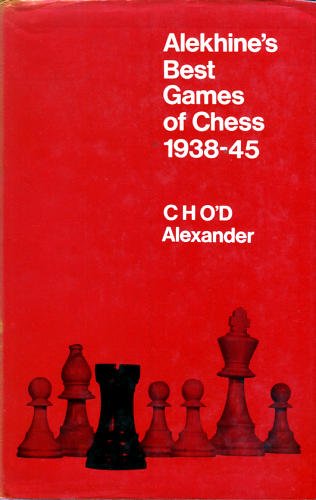
Even after he had to give up official connection with the magazine he retained a strong interest in its welfare. So, even though this recognition is belated and posthumous, I thought it was right to afford readers the possibility of joining with me in thanking High Alexander for all that he did in this respect in especial. At any rate, such matters should be on record for the chess historian.
From The Anglo-Soviet Radio Chess Match by E.Klein and W.Winter :
“CHO’D Alexander was born in Cork in 1909 and learned chess at the age of ten. He was educated at King Edward School, Birmingham, where he exhibited early prowess by winning the Birmingham Post Cup. In 1927 he won the British Boy’s Championship. During his student days, from 1928 to 1932, he was a convincing champion of Cambridge University. Subsequently he competed in five British Championships, winning the title in 1938. He also played in several international tournaments, his outstanding performance amongst these being Hastings in 1938, where he shared second and third prizes with Keres, following Reshevsky who won the tournament, and ahead of Fine and Flohr. In 1939, in the England-Holland match, he had the satisfaction of defeating the ex-World Champion, Dr. Euwe, in a sensational games, drawing the return game.
A brilliant mathematician, he took a first at Cambridge and chose a scholastic career, joining a well-known public school (Winchester College). From there, via a short spell in a business appointment (John Lewis), he entered the service of the Foreign Office, where, during the war years, his valuable work earned him the OBE.
He plays imaginative and courageous chess and is never afraid of the wildest complications.”

From British Chess Magazine, Volume XCIV (94, 1974), Number 6 (June), pp. 202-204 by PS Milner-Barry :
With the death of Hugh Alexander at the age of 64, British chess has lost the outstanding figure of the past forty years. His active playing career over some thirty years included two victories in the British championship and regular appearances in all representative teams from l93l-58, except when the nature of his Civil Service
duties prevented him from travelling behind the Iron Curtain. During the whole of the period after the war he was the regular top board for the England team. In the Hastings international congress he twice won the Premier tournament, on the second occasion tying with Bronstein. His victories in this series included two world champions (Euwe and Botvinnik) and numerous others in the Grandmaster class. He was an outstanding example, like H.E.Atkins and Dr. Milan Vidmar, of the amateur who could combine an exacting professional life of great responsibility and distinction with success in competitive international chess at the highest level and with the increasing professionalism of the game and the demands of knowledge and research that it makes upon the masters, this was much more difficult in Hugh’s time than in an earlier age.
It was indeed in the international field that his fame will principally rest. On the British championship scene, although he always did well before the War, and won convincingly at Brighton in 1938 in a strong field, his record did not match his abilities.

He never established anything like the superiority over his contemporaries that Atkins in a former age and Penrose in a later achieved. He won the championship again, in 1956, but that was a weak year when the Moscow Olympiad took first claim on the leading British players. It was not that he cared less – like all the great players he hated losing, though he was the most magnanimous of opponents – but that he seemed to require the stimulus of the great occasion, and of a world famous name on the other side of the board, to bring out the best in him.
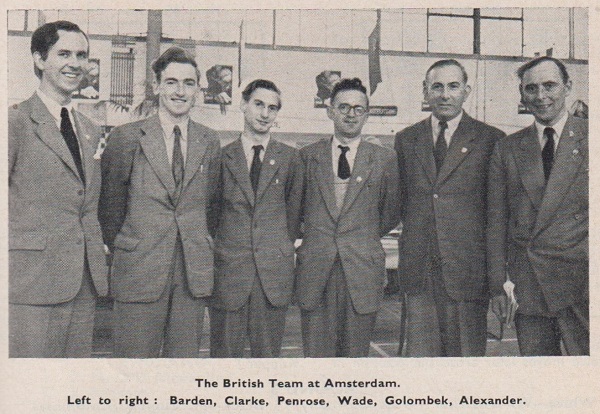
Alexander was perhaps the only English player of his day whom the Grandmasters would have treated as on a level with themselves. On his day he was liable to beat any of them, and they were well aware of it. In his younger days he was very much the gay cavalier, and a brilliant combinative and attacking player with a touch of genius. Latterly he lost some of this elan, and adapted his style to the responsibilities of the B.C.T. top board. His opponents too, with a healthy respect for his powers, were less inclined to give him opportunities. He was as capable of the dead-bat technique as anybody, and to that extent (to my way of thinking anyway) his games became less interesting, with quick draws making a higher contribution to his top-board results than in earlier years. But none the less he was the anchor-man of the British team until his retirement after the 1958 Olympiad.
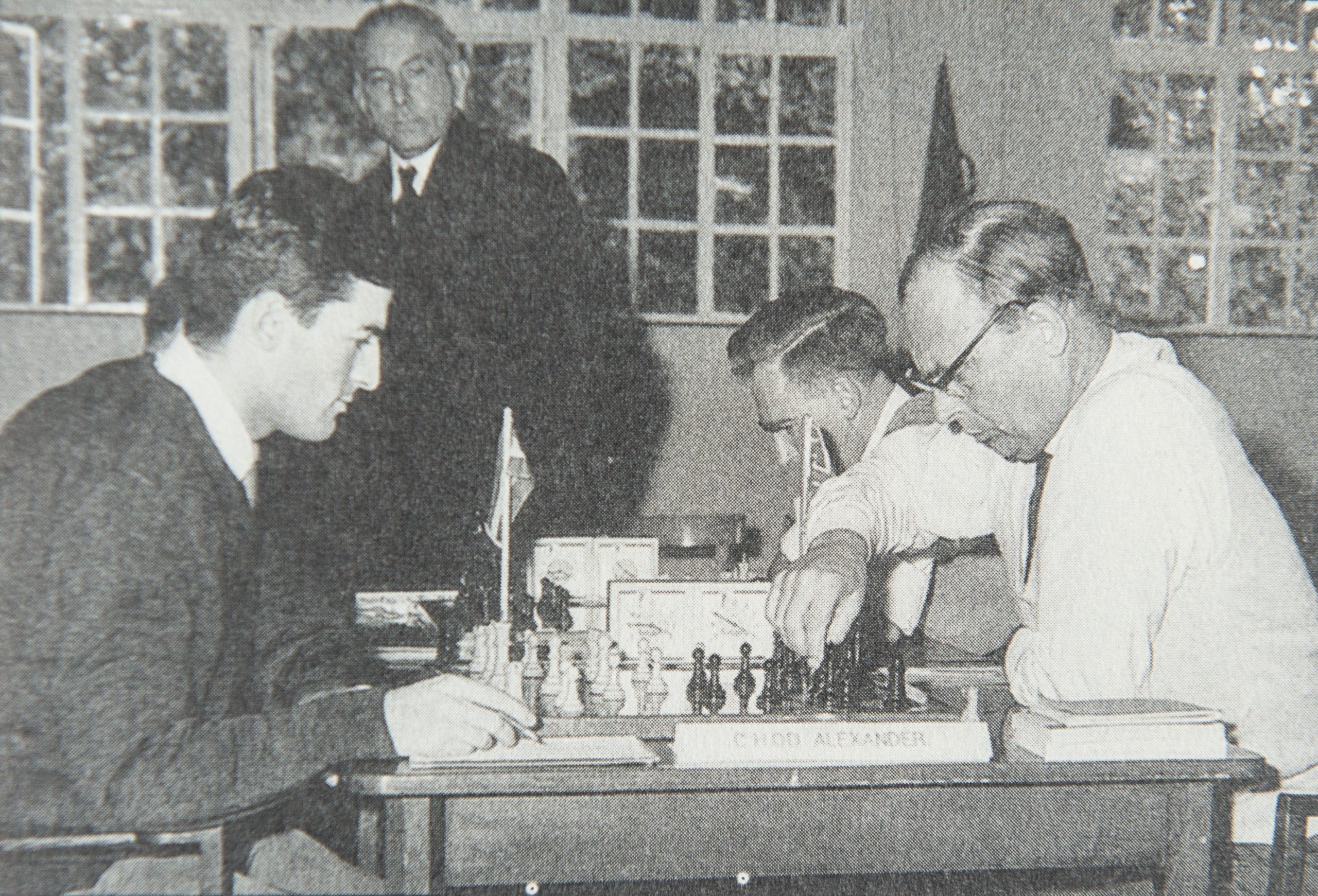
It was a great pity he gave up the game over the board at 50. He had years of good chess in him. But I think he felt he had scaled all the peaks he could scale, and that he was finding top-class competitive chess a burden difficult to reconcile with his Civil Service work and the prospect of a gradual and inevitable decline in his powers did not appeal to him. I made many efforts to tempt him back to the arena, but to no avail. I do not think he ever seriously regretted his decision, and in his last years he immensely enjoyed correspondence chess.
In 1964, Alexander became non-playing captain of the B.C.F. team, and held that role continuously until after the Siegen Olympiad in 1970.
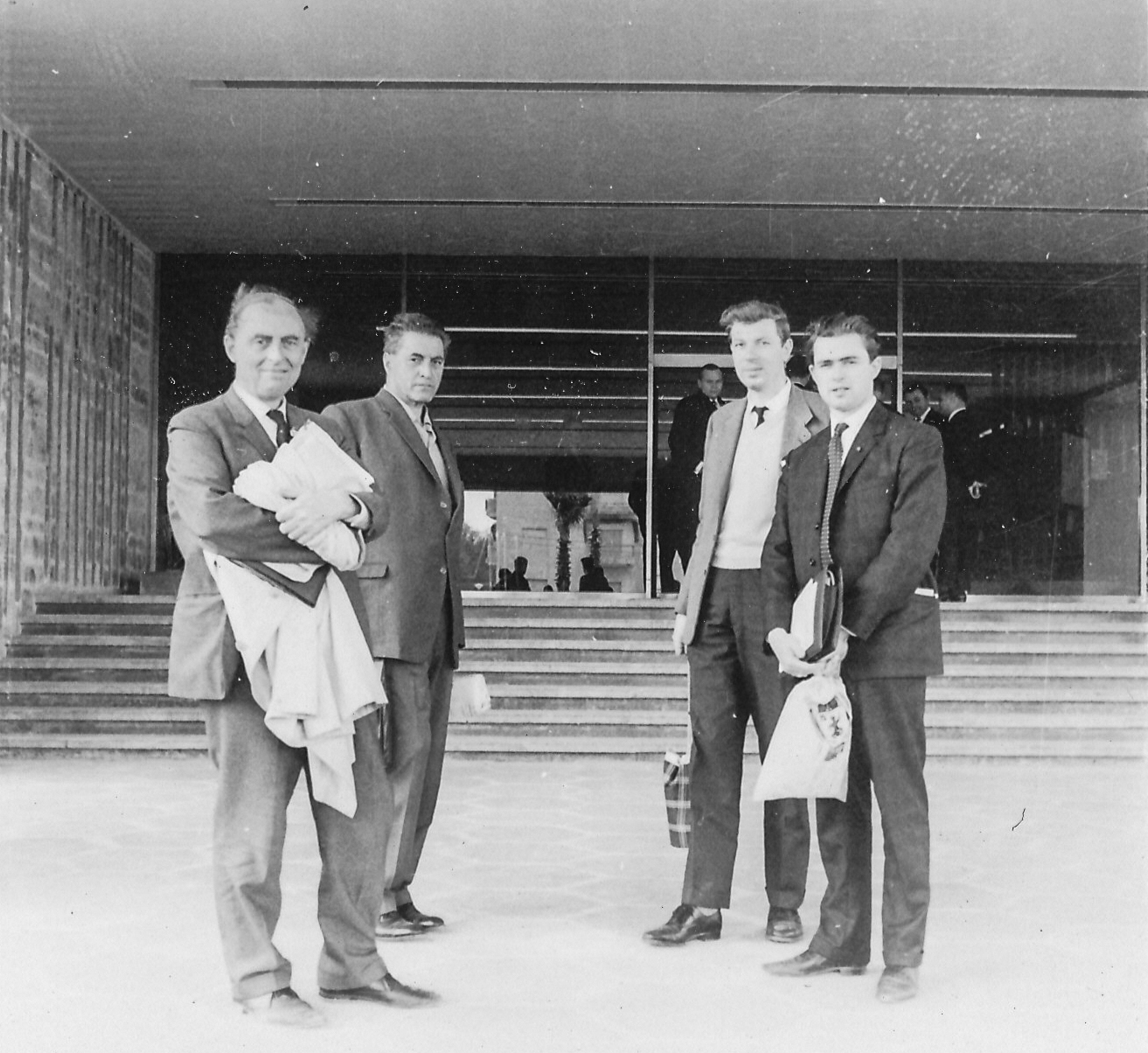
It was rather a disappointing period for British chess, and the results, while we were rebuilding a young team, could not – even with Penrose’s outstanding efforts at top board – have been expected to be favourable. But he threw himself wholeheartedly into all the work sponsored by the B.C.F. and the Friends of Chess to find and develop talent in the younger generation, and before he died the fruits of these labours were beginning to appear. He would have been proud indeed to have witnessed our recent triumph in the Anglo-German match.
As a captain he was, of course, immensely liked and respected by his team. My impression was that he took his responsibilities almost too seriously, and agonised too much over his decisions about whom to play and whom to rest. Nevertheless on balance he thoroughly enjoyed the work, and certainly, in spite of his innate modesty, he
was never one to be disturbed by ill-informed or irresponsible criticism, of which he had his share.
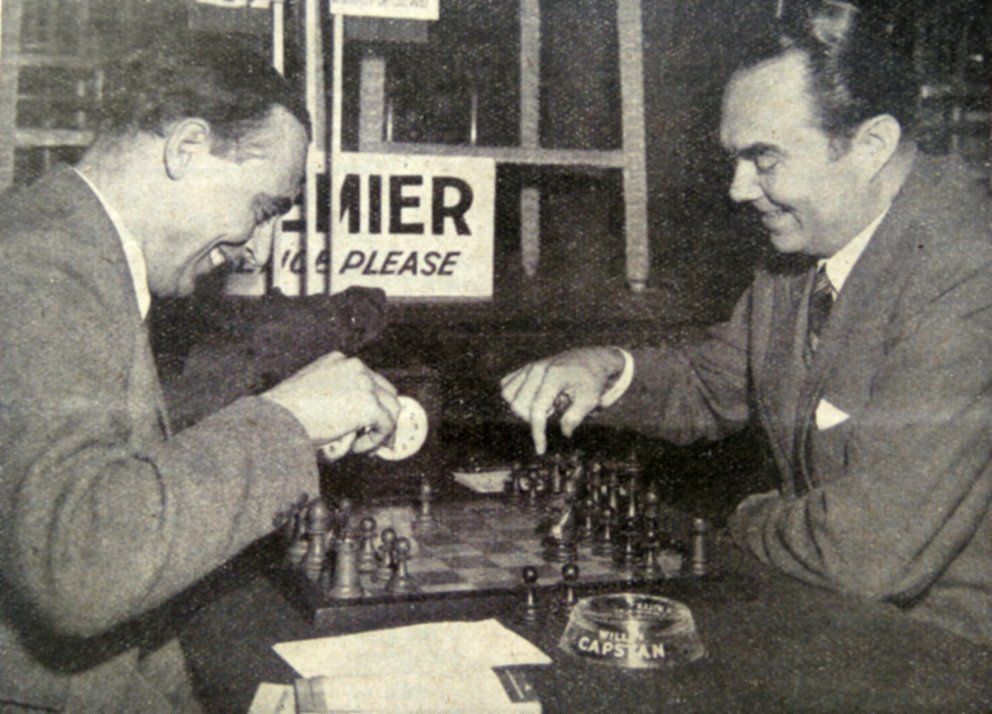
I suppose his most famous tournament result was his equal first with Bronstein at the Hastings Christmas Congress of 1953. Coming at a time when we were gloomily resigned to British players bringing up the rear in international tournaments, this created a great sensation.
The game with Bronstein lasted over 100 moves and Alexander won a most difficult Queen and Pawn ending by impeccable technique.

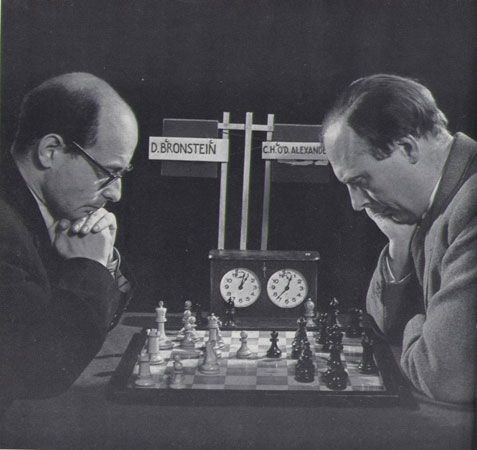
He went on with the Black pieces to massacre Tolush, the other visiting Russian Grandmaster.
Immense interest was created by this event. The popular press carried diagrams of the successive phases of the Bronstein saga. It was reported on the radio. By comparison with the furore created by the Spassky/Fischer match, it was no doubt small beer, but for those days the publicity was tremendous, and Alexander became the
hero of the hour.
It was entirely characteristic of him that this adulation did not go to his head. He kept everything in proportion, and encouraged everybody else to do the same. He said all the right things about Bronstein, but he did not claim, as one tends to do on these emotional occasions, that international sport was a panacea for friendship between the nations. Altogether it seemed to me an impeccable performance both on and off the board.
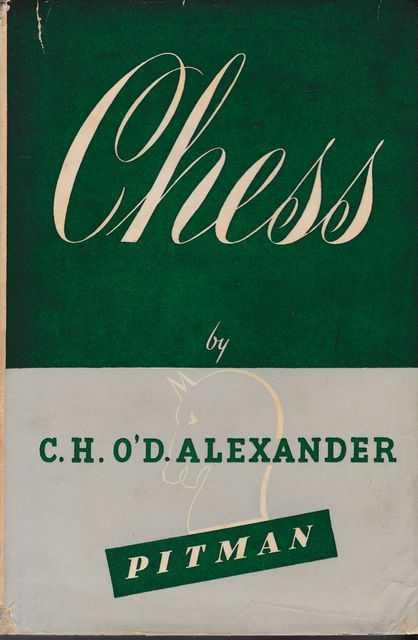
It is as a player that Hugh would, I think, have best wished to be remembered; and I have left myself little room to say anything about him as a journalist and writer. We are blessed, as readers of the B.C.M. will know, with many good and interesting writers on the game. But Hugh had, I believe, exceptional talents as a journalist. In his columns in the ‘Sunday Times‘, and latterly the ‘Financial Times‘, he set a very high standard. He always had something fresh and original to say, especially, I think, to the intelligent amateur rather than the expert; and he said it in a way that was both disarmingly modest and yet lively and entertaining. The warmth of his personality came out clearly both in his writing and in his public speaking – both were entirely natural and wholly without amour-propre.
His articles gave great pleasure to a wide circle, and many who never met him in the flesh must have felt that they had come to know him as a person. Similarly his book on the Spassky-Fischer match
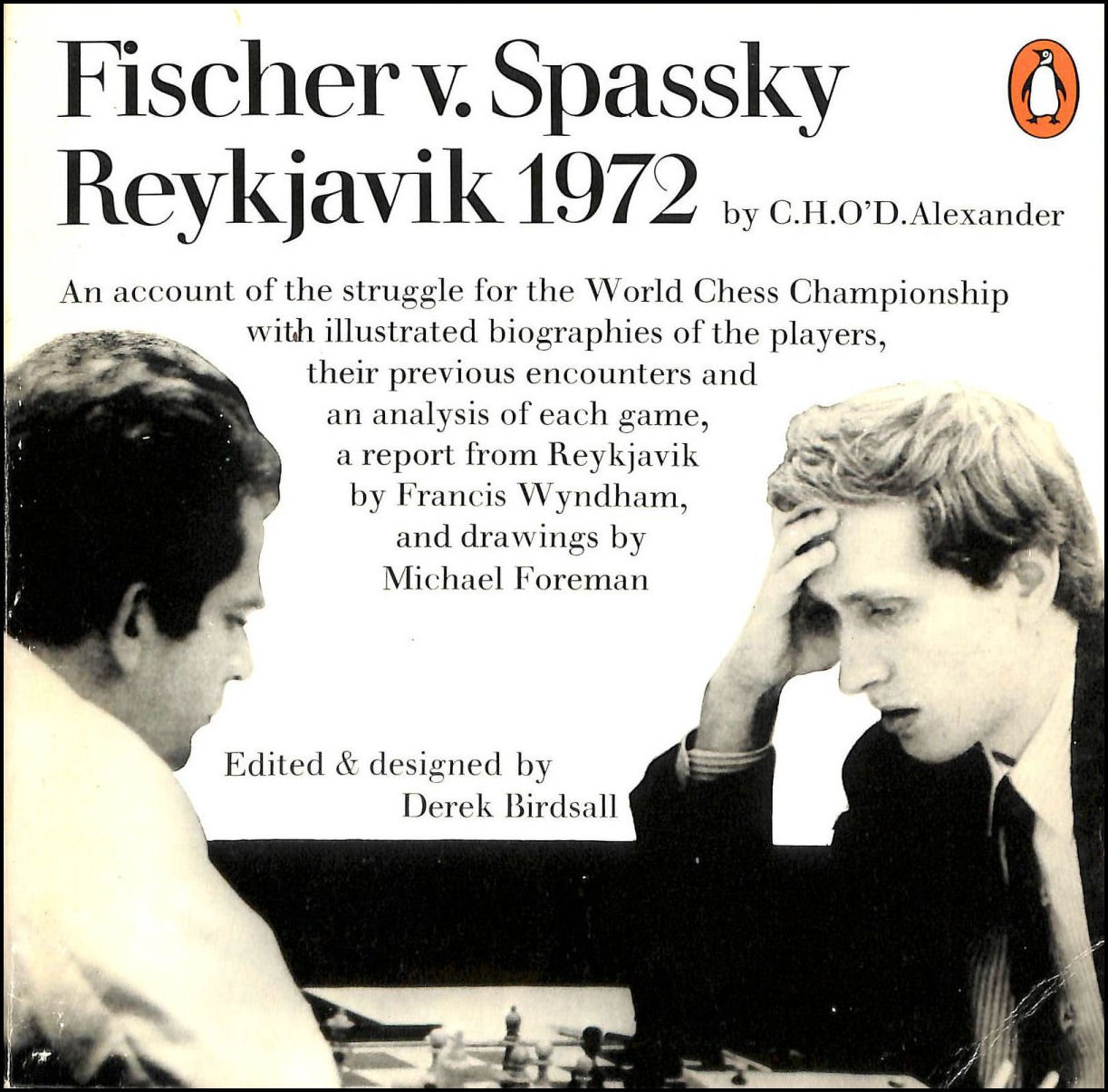
(like the ‘Book of Chess’, which was written in the last year of his life) is an extremely vivid, as well as scholarly, piece of writing. It is almost impossible to believe that it was completed, within days of the conclusion of the match, by a man apparently under sentence of death throughout its progress.
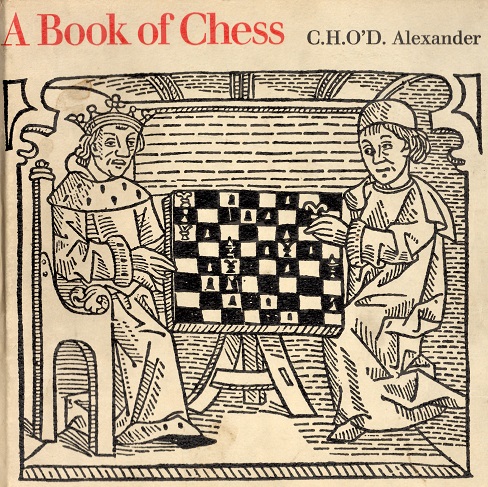
Now that it has come, the loss of Hugh Alexander to British chess and chessplayers, alike as player, writer, administrator and friend, is immeasurable.
From CHESS, Volume 39 (1974), Nos. 693-94, March, p.162 by BH Wood :
The death of Conel Hugh O’Donel Alexander deprived English chess of one of its most vivid characters. Born l9th April 1909, he learnt chess at the age of 8.
From a Londonderry college he went to King Edward’s School, Birmingham, where as a schoolboy he won the Birmingham Post cup, which carries with it the unofficial championship of Staffordshire, Warwickshire and Worcestershire. Going on to Cambridge, he not only won the University championship four years in succession, but picked up first-class honours. He won the British championship in 1938.
In 1939 I found myself on a boat with him bound for the Chess Olympiad in Buenos Aires. He was team captain with Sir George Thomas, P. S. Milner-Barry and H. Golombek : other distinguished members of the team.
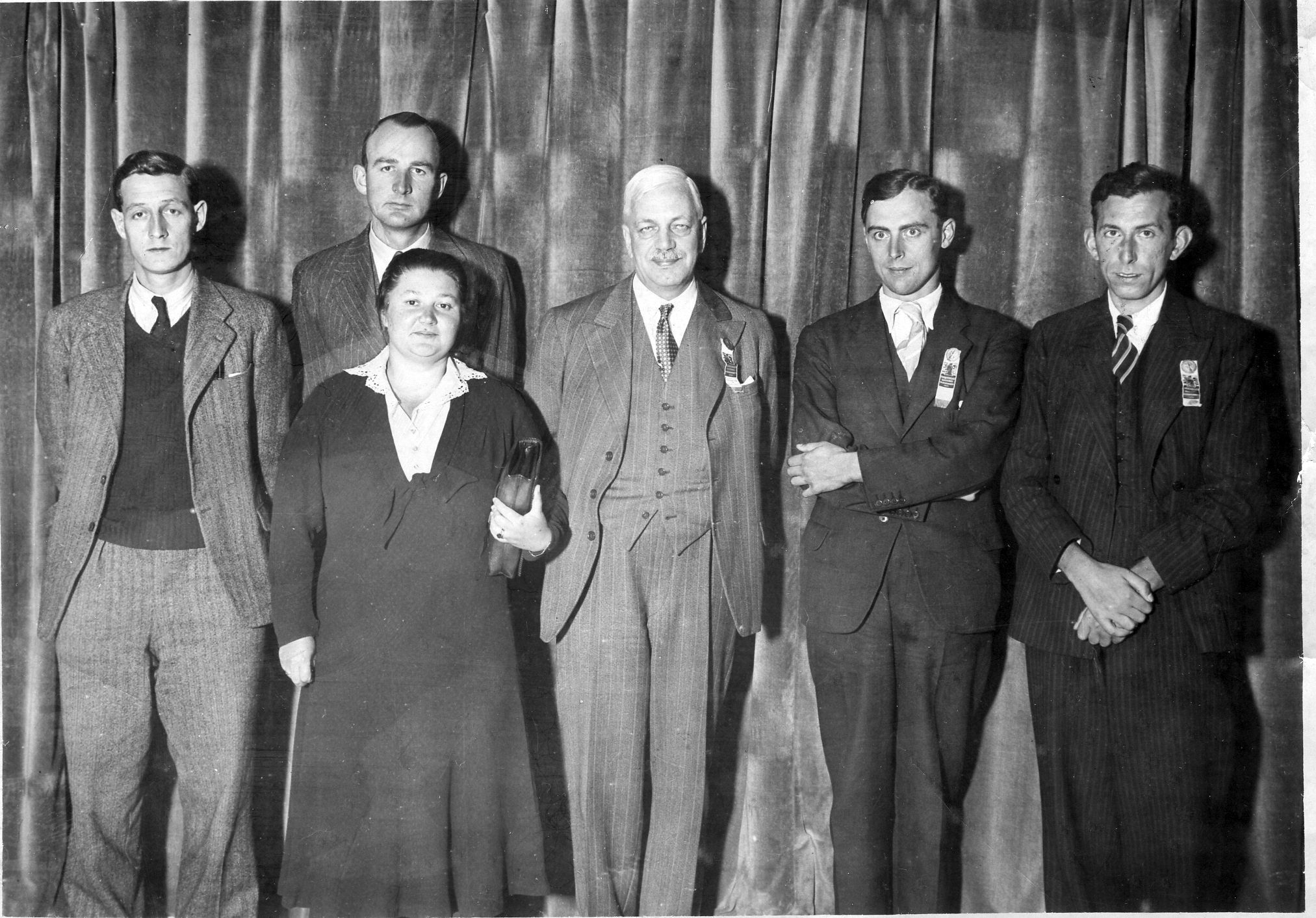
War broke out after about six rounds. With typical determination, Alexander jettisoned chess for patriotism, caught a boat home, volunteered for service on disembarking, and within a few weeks had attained the rank of colonel in British Intelligence. He remained attached to Intelligence and the Foreign Office until his retirement a few months ago. As a curious consequence of this commitment, though he settled in to the team captaincy for the British Chess Federation in the biennial chess Olympiads and participated in many chess events abroad, he was never allowed to travel anywhere behind the iron Curtain.
His fame certainly did, however. In the radio match, Britain v USSR in 1946, the most important event in British chess for a decade before and after, he found himself pitted against Mikhail Botvinnik, then at the height of his powers and destined to hold the world championship for 14 years. The first game he lost; the second he won, in superb style. His great adversary was outplayed.
He had some great years at Hastings. A 120 move victory over Bronstein with a queen and pawns endgame stretching over l3 hours through 3 days, earned headlines in the national press unequalled until the Spassky-Fischer furore of 1972, won him first place in 1954 and started him with a chess column in the Sunday Times. He was equal with Bronstein, above O’Kelly, Matanovic, Olafsson, Teschner, Tolush, Tartakover, Wade and Horne.
Hastings illustrated Alexander’s weaknesses as well as his strengths. Twice he won the premier tournament there, only to finish among the tail-enders the year after. Only once more was he to win the British championship; in a rather weak field, entering at the last minute with typical opportunism.
He was a brilliant conversationalist and speaker, a fine bridge player, a master mathematician, an expert on codes, a first-class journalist and writer. Among varied other interests were croquet and philately. He threw himself wholeheartedly into anything he did. His organization, “The Friends of Chess”, provided generous financial support for a wide range of chess events. A few days before his death he was full of plans for the future, including a big History of British Chess. He burnt himself out. The world of chess is a poorer and duller place without him.”
From the GCHQ Official site :
“The great mathematician G. H. Hardy described C. H. O’D. Alexander as the only genuine mathematician he knew who did not become a professional mathematician. Hardy recognised that Alexander’s failure to win a fellowship at the Cambridge Tripos exams was most likely due to his attention being absorbed by chess. Conversely, Alexander’s fellow chess International Master Harry Golombek said of the two-time British Champion “the demands of his profession left him with comparatively little time for [chess] practice and study; otherwise he would certainly have been of true grandmaster class, and possibly even of world stature”. Above both chess and mathematics, Alexander prioritised leading the British Government effort on cryptanalysis.
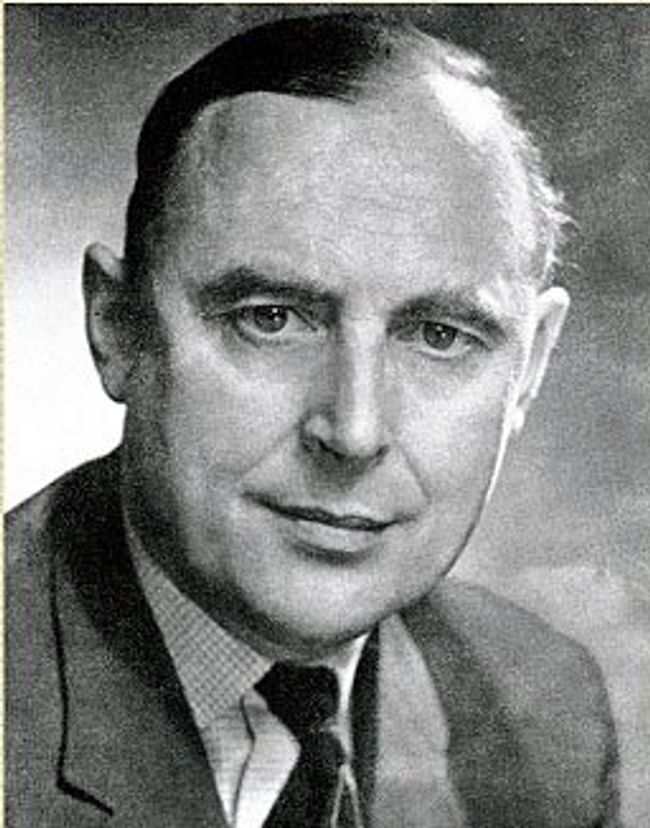
Alexander was an early recruit to Bletchley Park; he began in Hut 6 working on Army and Luftwaffe Enigma messages before moving in 1941 to Hut 8 to join Alan Turing’s work on the Naval Enigma. Alexander had one of the most agile minds of the new breed of mathematical cryptanalysts; he proved the best at the pen and paper methods of ‘banburismus’ that reduced the computational work of Enigma attacks and his military aptitude test assessed him as suitable for development up to four star general. Although he has not achieved the renown of Good, Turing, Tutte, and Welchman, he was responsible for many breakthroughs. Perhaps the most significant was spearheading the UK-US joint work breaking the Japanese CORAL system used by Naval attaches. More importantly, as a former teacher and head of research at John Lewis, Alexander was much better suited to the organisational and administrative tasks of Hut 8 than the hyper-rational Turing. Alexander gradually assumed more and more of this work. The story goes that one day when Turing arrived late at the Park and the record book asked him to name the head of his section; Turing wrote “Mr Alexander” and with the logic of bureaucracy Alexander was treated as the head of Hut 8 from then onwards. Praise for Alexander’s leadership is a theme common to all those who worked in Hut 8.
After the war, Alexander briefly returned to John Lewis before returning to the new GCHQ and continued to excel as both a cryptanalyst and leader. By 1949 he had been appointed head of the cryptanalysis division. It was a post that he held until his retirement, despite offers of promotion to more senior positions. He used the weight of his position to testify strongly as a character witness on behalf of Alan Turing during Turing’s indecency trial. By 1971, already past the age of retirement by two years, Alexander decided to step down. Both GCHQ and their partners were keen to make continued use of his expertise and offered all manner of consultative work, which he declined. He died in 1974 and although his obituaries rightly spoke in glowing terms of his chess achievements, the impact of his more secret work still cannot be fully revealed.”
“Correspondence chess is only mentioned briefly in the article. CHO’D took up international postal chess in 1963 playing board 3 for the BCCA “Socrates” team in the Eberhardt Wilhelm Cup, a European team event. He annotated his first two games to finish in the November 1964 issue of the BCCA Magazine, Correspondence Chess, one of which is in my history of British CC.
He had in fact taken board 2 for GB against the USA in the 1,000 board match which began in 1935 but was never completed. Alexander’s opponent was Fred Reinfeld (according to Chess Magazine) but I have never seen a result and don’t know if they actually played many moves.
Starting in 1964 Alexander played in a GB-USSR postal match, with a draw and a loss against Yudovich.
In 1965 he started CC Olympiad 6 preliminaries on board 3 in section 1 for GB and scored 3 wins and 5 draws; he was the only player not to lose to M. Ali Farboud of Iran, the country which won the group. (Farboud played on the Iranian team in the 1962 and 1964 FIDE olympiads.) I have only found two of Alexander’s games from this tournament.
Next GB played in the preliminaries (section 3) of the 7th correspondence olympiad (starting 1968) with a much stronger team which won its group. Alexander played board 2 below Adrian Hollis. His score of 6 wins and one draw earned him the ICCF international master title. I have only found three of his games from this event.
In 1972 Alexander started, again on board 2, in the olympiad final but had only completed one or two of his games when he died, and the unfinished games were taken over by Ken Messere who found it hard (since he was given no notes) to work out what Hugh had planned in various complicated middle game positions.
Alexander also played most years for Gloucestershire in the Counties and District correspondence tournament run (then) by the BCF and my book also includes a win against Peter Clarke from that event. It is a pity that more of Alexander’s CC games are not known. I have only 17 plus a few that Messere completed.”
In the March issue of CHESS for 1963, (Volume 28, Number 427, pp.147-155) William Winter wrote this:
The late 1920’s and the early thirties produced a crop of fine players most of whom are still in full Practice. The leading representatives of this group are C. H. O’D.Alexander, H. Golombek, R. J. Broadbent
and P. S. Milner-Barry, of whom Alexander is to my mind infinitely the greatest. It is true that he has only once been British champion while, at the time I write (July 1955), Golombek and Broadbent have each held the title on two occasions, but he has a remarkable record against the grand masters.
Like Yates, of whom his style is reminiscent he requires the best opposition to bring out the best in him. Among his victims are three Soviet grand masters, including the
world champion Botvinnik, and he has secured a number of other notable scalps. Of all his games the one I like best is that against Gligoric in the Staunton Centenary Tournament in 1951. The great Yugoslav who won the tournament simply did not know what had hit him.
Alexander’s approach to the theory of openings is very interesting and highly practical. He does not try to acquire a wide comprehensive grasp of the openings as a
whole, but concentrates on little practical variations of which he makes an exhaustive study, often discovering qualities which have hitherto escaped notice. A case in point is his rehabilitation of the Dutch Defence with an early . . .P-KN3, a line which, if there is any justice in chess nomenclature, should certainly be called the Alexander variation. I fear however that this is unlikely as the names given to the chess openings are ridiculous in the extreme. Take for example this very Dutch Defence. So far as I know (and my knowledge of these things is extensive) no Dutch-player has ever practised it, while it was played regularly for over twenty years by the English master H. E. Bird, who also published a considerable amount of analysis on it. This is the more surprising in that the kindred system P-KB4 f6r White, is called by the name of Bird’s Opening! There is another funny case of a variation of the Slav Defence invented by Gerald Abrahams. I played this in a short match against the Dutch master Noteboom. The latter was favourably impressed, and adopted it himself in a few games, with the result that it has ever since been called the Noteboom variation, although before I played it against him he had neither seen nor heard of it. It is high time that the whole question of nomenclature of the Chess Openings was taken in hand by the International Federation.
From Chessgames.com :
“Conel Hugh O’Donel Alexander was born in Cork, Ireland. Awarded the IM title in 1950 at its inception and the IMC title in 1970, he was British Champion in 1938 and 1956.
During the Second World War, he worked at Bletchley Park with Harry Golombek and Sir Philip Stuart Milner-Barry, deciphering German Enigma codes and later for the Foreign Office. Alexander finished 2nd= at Hastings (1937/38) tied with Paul Keres after Samuel Reshevsky and ahead of Salomon Flohr and Reuben Fine. He held Mikhail Botvinnik to an equal score (+1, -1) in the 1946 Anglo-Soviet Radio Match, and won Hastings (1946/47) while finishing equal first at Hastings (1953/54). He represented England on six Olympiad teams. Alexander was also an author of note. He passed away in Cheltenham in 1974.”
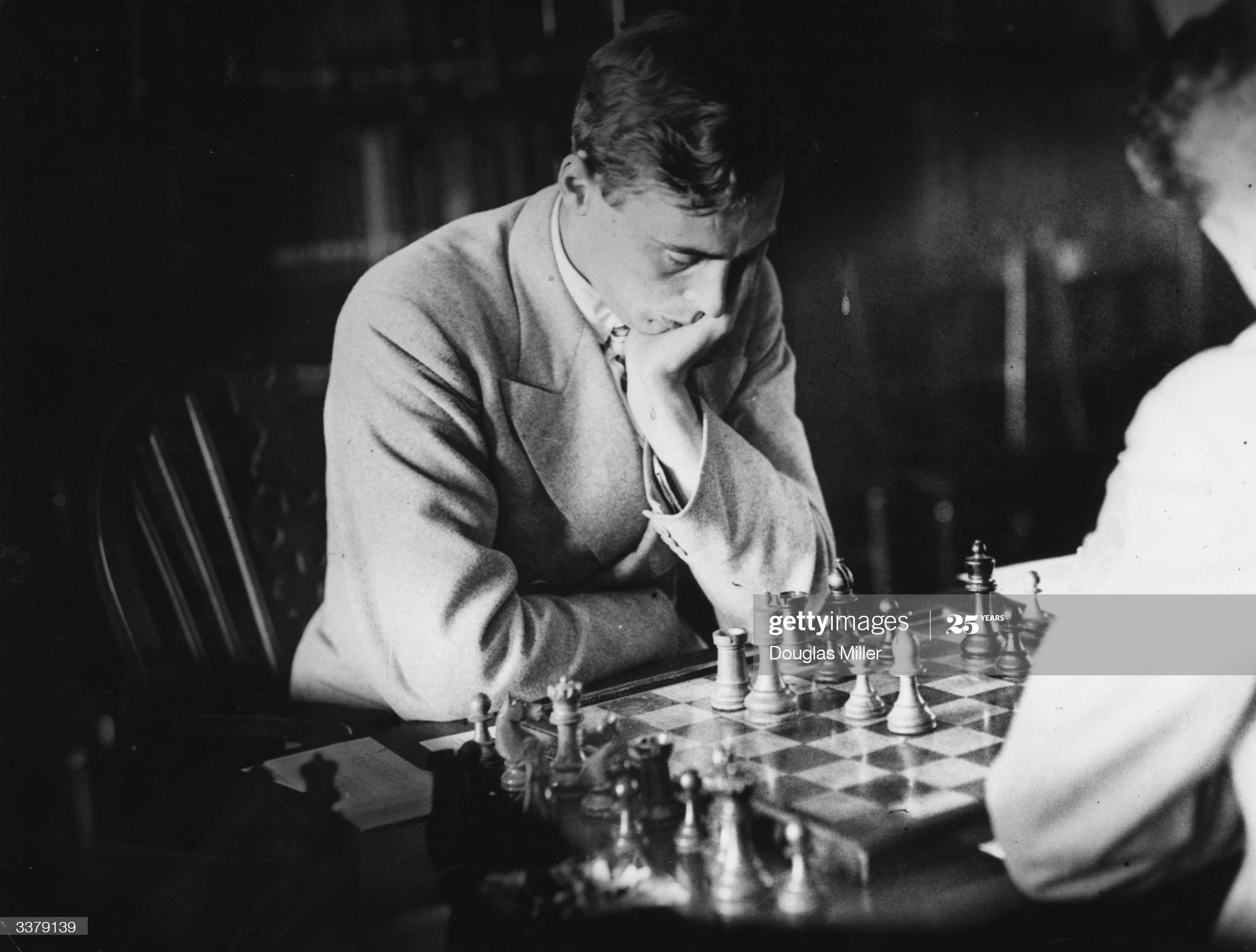
From The Oxford Companion to Chess by Hooper & Whyld :
International Master (1950), International Correspondence Chess Master (1970). Born in Cork, he settled in England as a boy. In spite or because of his intense application at the board his tournament performances were erratic. From about 1937 to the mid 1950s he was regarded as the strongest player in Great Britain, although he won only two (1938, 1956) of the 13 British Chess Federation Championships in which he competed; he played for the BCF in six Olympiads from 1933 to 1958. Holding a senior post at the Foreign Office, he was not permitted to play in countries under Soviet control or influence; but when he did compete abroad he achieved only moderate results. His best tournament achievement was at Hastings 1937-8 when he was second (+4=5) equal with Keres after Reshevsky ahead of Fine and Flohr; but he is better remembered for his tie with Bronstein for first prize at Hastings 1953-4. He won his game against Bronstein in 120 moves after several adjournments, and the outcome became a kind of serial in the press, arousing great national interest in the game. Alexander was the author of several books on chess, notably Alekhine’s Best Games of Chess 1938-1945 (1949) and A Book of Chess (1973).
From The Encyclopaedia of Chess by Anne Sunnucks :
For many years the chess correspondent of The Sunday Times, The Spectator (pseudonym Philidor) and the Evening News. There was probably no “chess name that was better known to the non-chess-playing element of the British public than that of Hugh Alexander. His victory over Russian Grandmaster David Bronstein at Hastings in 1953, after a struggle which lasted for 120 moves and took 13 hours, made chess front page news in the British press.
Born in Cork on 19th April 1909, Alexander picked up the game at prep school at the age of 8. In 1926 he won the Boy’s Championship, later to be recognised as the British Boy’s Championship, at Hastings. After coming down from Cambridge University, where he won the university championship four times, Alexander taught mathematics at Winchester College from 1932 to 1938. He later joined the Foreign Office.
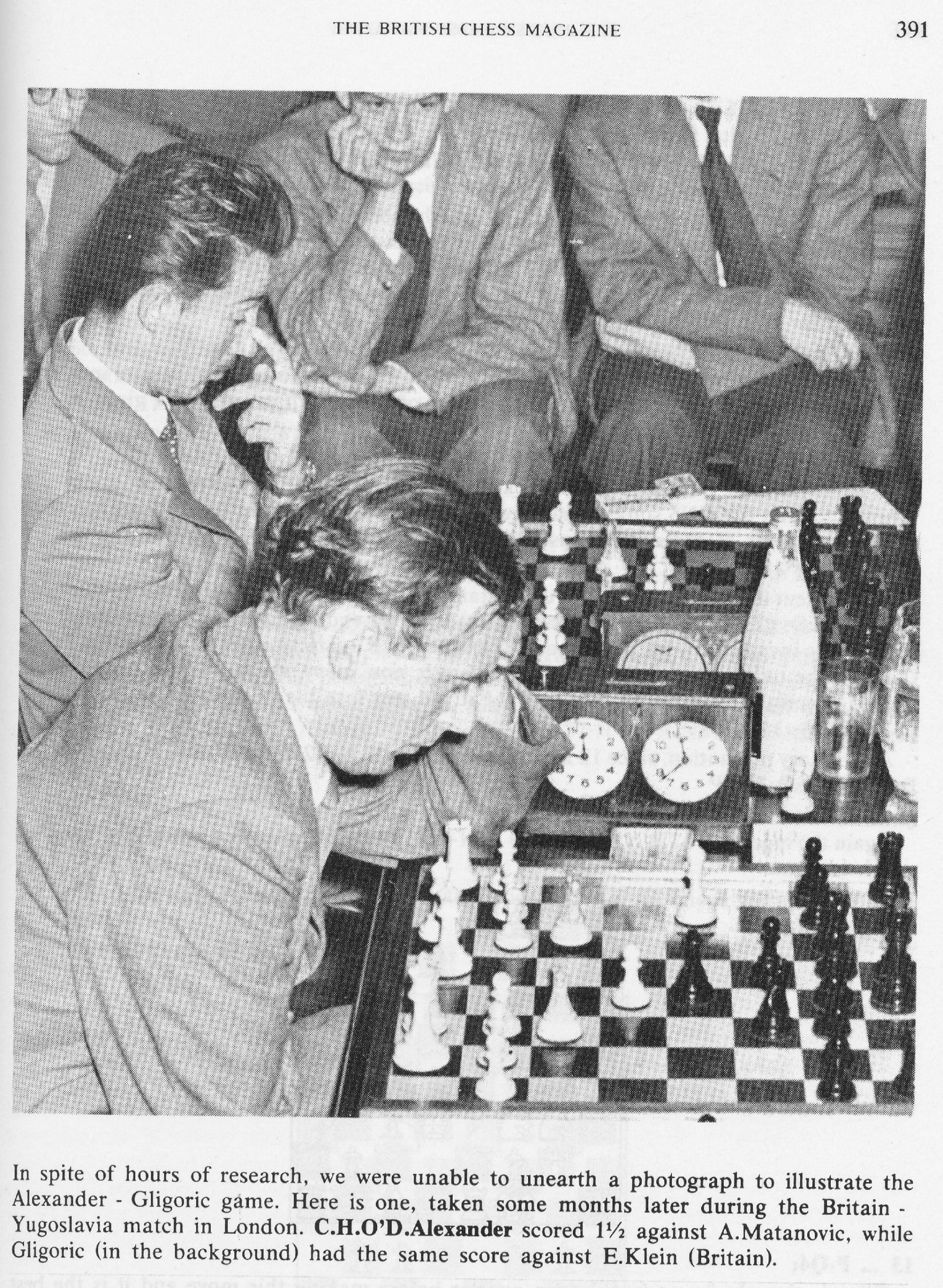
One of the few British players who might have reached World Championship class if he had chosen to devote sufficient time to the game, Alexander was at his best when he faced a top class opponent.
During his chess career, he scored victories over two World Champions Botvinnik and Euwe, and he beat a number of other Grandmasters, international tournaments were all at Hastings where he came =2nd in 1938 with Keres, half a point behind Reshevsky and ahead of Fine and Flohr; 1st in 1947 and =1st with Bronstein in 1953. In 1951 tournament he came =5th.His other hobbies included bridge, croquet and philately, He was the Author of Alekhine’s Best Games of Chess 1938-1945 (Bell), Chess (Pitman) and joint author with T.J. Beach of Learn Chess; A New Way for All (Pergamon Press);
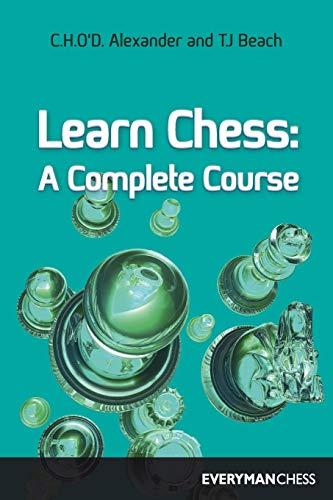
A Book of Chess (Hutchinson) 1973; The Penguin Book of Chess Positions (Penguin) 1973.
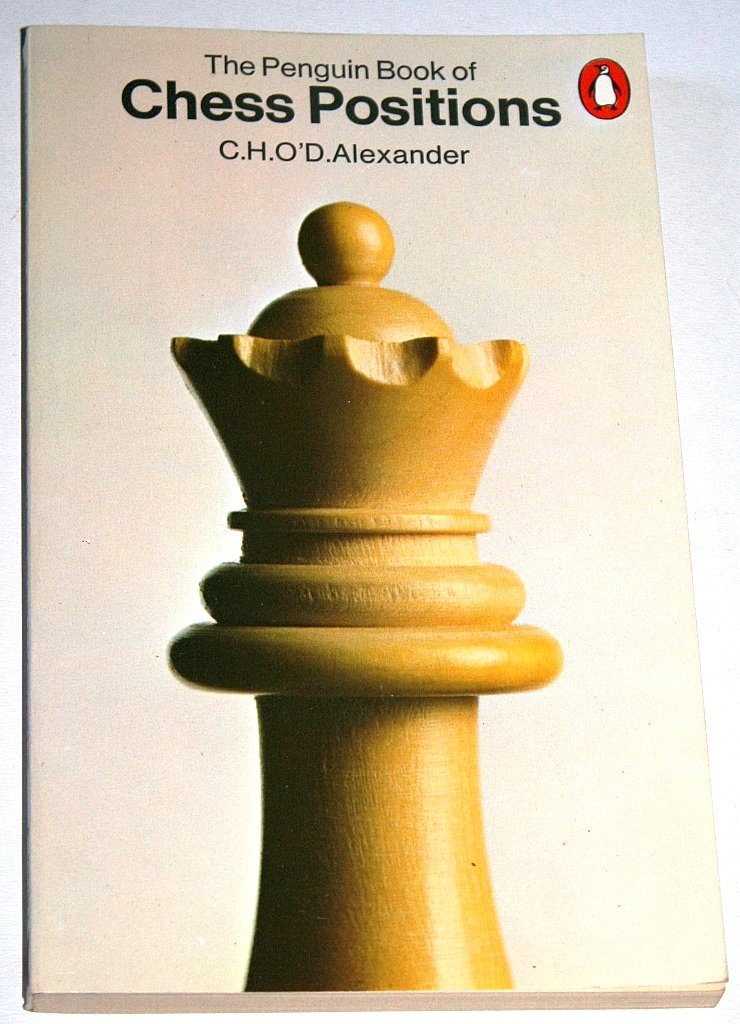
Here are further third party articles of interest :
A Tribute to Hugh Alexander by Sir Stuart Milner-Barry
Conel Hugh O’Donel Alexander: A Personal Memoir by Sir Stuart Milner-Barry
Here is an interesting article on his film appearance.
Here is his detailed Wikipedia entry
According to C.N. 10817 Hugh lived at various addresses when working at GCHQ :
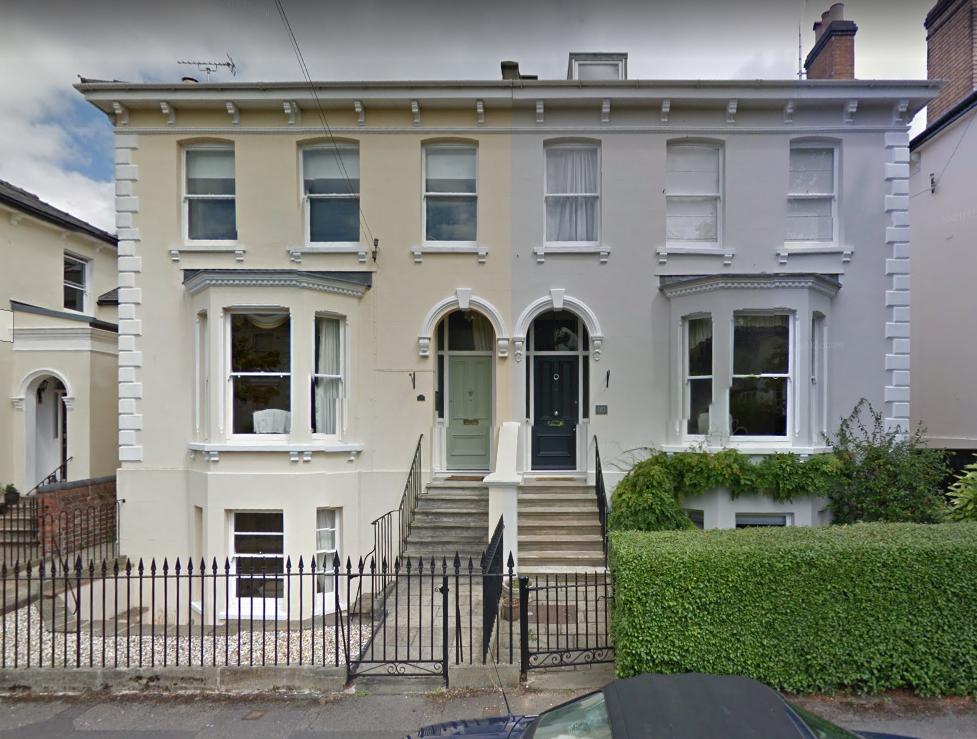
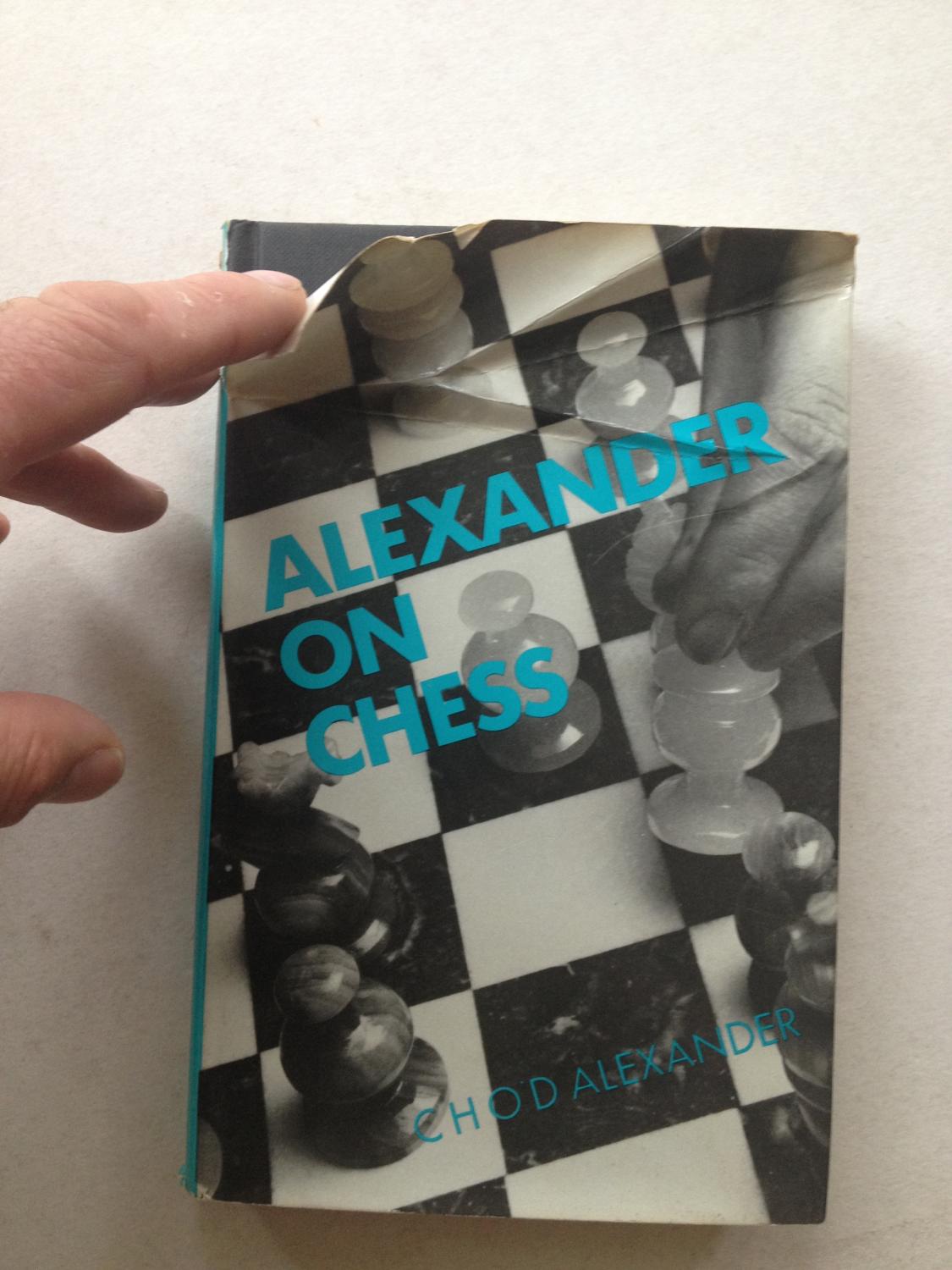

Golombek and Hartston, The Best Games of C.H.O’D. Alexander (1976).
We remember Cecil Valentine De Vere (14-ii-1846 09-ii-1875)
From British Chess Magazine, Volume CXXVI (125, 2005), Number 11 (November), page 610:
In Quote and Query #5741 Chris Ravilious wrote:
“When writing their “The English Morphy? The Life and Games of Cecil De Vere (2001)” Owen Hindle and Bob Jones faced some intractable difficulties. Where and in what year was De Vere born? What was his baptismal name? What could be established regarding his parentage and early life? On several of these topics they achieved significant progress but lacunae remained. The absence of a birth certificate was a particular cause for regret.
Owen’s researchers into De Vere’s background have continued and he has now made two further discoveries, the first being the 1861 census entry for 10 Lower Calthorpe Street, St Pancras. This lists Katherine De Vere (Cecil’s mother, aged 36 and born in Wales: her forename was previously uncertain), a 15-year old ‘C.V. De Vere’, a house servant and a lodger. Cecil, employed as a clerk to a West India merchant, is stated to have been born in ‘St Georges’, Middlesex, presumably the parish of St George’s adjacent to Hyde Park.
Owen’s second breakthrough came with the discovery of the elusive birth certificate. From this we learnt Valentine John Cecil De Vere was born on St. Valentine’s Day 1846 (not 1845 as some sources have suggested), at 46 Warwick Street, just to the east of Regent Street. (While not in St George’s Parish, Warwick Street is near enough for the divergence between this and the census return to be readily explicable) Valentine’s mother’s name is entered as Catherine Matthews and by a clerical slip-up the same appellation appears under ‘name of father’, where it has been crossed through and replaced by a mysterious ‘No. 12’ plus the registrars initials. ‘Occupation of father’ is entered as ‘surgeon’.
From British Chess Magazine, Volume LXXXIII (83, 1963), Number 5 (May), page 156:
In Quote and Query #1241 DJ Morgan wrote:
“Cecil de Vere, whose game was given by colleague Mr. Coles on p.83 of the March issue was one of the tragic figures of British Chess. Details of his short life are found in various writings of the Rev. G. A. MacDonnell and in the pages of The City of London Chess Magazine. We quote from P.W. Sergeant. He was born on February 14th, 1845, and his early natural ability for chess was developed by Francis Burden. In 1860 he began to visit the Divan on Saturday afternoons. By 1862 he was too strong for Anderssen at the odds of knight. In January, 1865, The Chess Player’s Magazine reports his having recently won the majority of a series of games with MacDonnell on level terms. Soon after, receiving pawn and move he defeated Steinitz by 7-3, with either 3 or 4 draws. He was indeed, the brightest prospect in British chess. But tragedy set in. By the Dundee Congress of 1867 he was in the grip of consumption. On top of this he came into a legacy, gave up a post he had with Lloyd’s, and set out on a life of dissipation. In 1872 he took over the chess editorship of The Field from Boden, and held it for tow years. But his constitution was undermined. A kindly amateur named J. Clark headed a subscription to send him to Torquay, It was too late. He died on February 9th, 1875, five days short of his thirtieth birthday.”
From The Oxford Companion to Chess by Hooper & Whyld:
Cecil Valentine De Vere, pseudonym of Valentine Brown, winner of the first official British Championship tournament organized by the British Chess Association in 1866. He learned the game in London before 1858 and practised with Boden and the Irish player Francis Burden (1830-82). De Vere played with unusual ease and rapidity, never bothering to study the books. His features were handsome (an Adonis says MacDonnell), his manner pleasant, his conduct polite. He “handled the pieces gracefully, never “hovered” over them, nor fiercely stamped them down upon the board … nor exulted when he gained a victory…in short, he was a highly chivalrous player.’ So wrote Steinitz who conceded odds in a match against De Vere and was soundly beaten, (See pawn and move.) De Vere’s charm brought him many friends.
At about the time that he won the national championship his mother died, a loss he felt deeply, “The only person who ever cared for me”.
Receiving a small legacy he gave up his job. which Burden had obtained for him at Lloyds the underwriters, and never took another. He entered some strong tournaments but always trailed just behind the greatest half-dozen players of his time. His exceptional talent was accompanied by idleness and lack of enthusiasm for a hard task. On the occasion of the Dundee tournament of 1867 he took long walks in the Scottish countryside with G. A. MacDonnell, who writes that a ‘black cloud’ descended on De Vere. It may have been the discovery that he had tuberculosis; more probably he revealed to the older man a deep-rooted despair, the cause perhaps of his later addiction to alcohol.
In 1872 Boden handed over the chess column of The Field to provide him with a small income; but in 1873 the column was given to Steinitz on account of De Vere’s indolence and drunkenness. At the end of Nov, 1874 his illness took a turn for the worse, he could hardly walk and ate little. His friends paid to send him to Torquay for the sea air, and there he died ten weeks later. He had failed to nourish a natural genius in respect of which, according to Steinitz, De Vere was “second to no man, living or dead*.
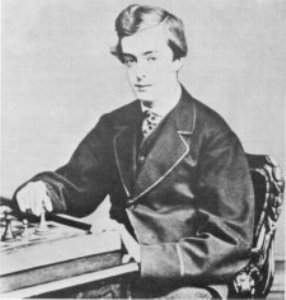
From The Encyclopedia of Chess by Anne Sunnucks:
First official British Chess Champion, Cecil de Vere was born on 14th February 1845 (in Montrose, Angus, Scotland : Ed.) and was taught to play chess when he was 12 by a strong London player, Francis Burden. By the time he was 15, he was a regular visitor to “The Divan” on a Saturday afternoon.
At the age of 19 De Vere played a number of games against MacDonnell winning the majority of them. So great was his promise that the City of London Chess Club raised a purse for a match between him an Steinitz, Steinitz giving the odds of a Pawn and a move. De Vere won.
In 1866 the first British Championship, organised by the British Chess Association was held. De Vere won, ahead of MacDonnell and Bird, and so became the first British Champion at the age of 21.
The following year in the Paris 1867 tournament, he was 5th out of a field of 13, and he tied for 3rd prize in the Dundee Congress, ahead of Blackburne, having beaten Steinitz in their individual game.
While he was in Dundee, De Vere learned that he was suffering from Tuberculosis. The news changed his whole life. Having recently inherited a few hundred pounds, he gave up his job at Lloyd’s and started living on his capital, determined to enjoy the few years he had left. He continued to play chess, but his performances were marred by his newly acquired addiction to the bottle.
De Vere was once described as “A Morphy without book knowledge”. His talent was great enough for him to be able to take on the leading masters of the day without any study or preparation, but more than that is needed to reach the top. De Vere lacked the strength of character and health to fulfil his early promise. He died a few days before his thirtieth birthday.
From The Encyclopedia of Chess by Harry Golombek:
The first official British Champion and a player of great promise who might well have attained world fame had he not be carried off by that nineteenth-century British scourge, tuberculosis, before he attained the age of thirty.
Most of the details of his life are to be found in the writings of G.A. MacDonnell, who met him when De Vere was fourteen and was so struck by his good looks as to refer to him as “Adonis”.
His first tournament success came in 1866 at the London Congress organised at the St. George’s Club in the first few days and then in other venues by the British Chess Association. De Vere played in two events, a Handicap tournament and a Challenge Cup event which was in fact the first British Championship tournament.
The Handicap tournament was run on the same lines as London 1851, i.e. it was a knock-out event with matches of three games, draws not counting. De Vere met Steinitz in round 1 and lost by 2-1.
The first British championship tournament was an all-play-all event in which the ties were decided by the first player to win three games and in which the championship went to the winner of the biggest number of games. De Vere was an easy winner with 12 wins, followed by MacDonnell and J.I. Minchin 6, H.E Bird 3 and Sir John Trelawney 0.
Thus De Vere was the first British Champion and at that age of twenty-one. A photograph of him about this time shows that he bore a remarkable likeness to the international master John Nunn, who won the European Junior championship a hundred years after De Vere’s death.
De Vere confirmed his position as a leading British player by coming first in another tournament in 1866 at Redcar in North Yorkshire. This was an event open to all British amateurs and among his opponents were Owen, Thorold and Wisker.
It was in the following year that he commenced his career in international chess. In the important double-round tournament at Paris he occupied an honourable fifth place out of 13 players. At Dundee (the third congress of the British Chess Association) he finished equal 3rd with MacDonnell, below Steinitz but beating him in their individual game and coming ahead of Blackburne.
It was during his visit to Scotland (he went to stay with relatives after the tournament) that he learnt he was afflicted with consumption. This knowledge, together with the death of his mother, drove him to drink which was to accelerate his end.
inheriting a few hundred pounds, presumably from his mother, he gave up his post at Lloyd’s and decided to live on his capital together with such additional sums as he could earn from chess.
In this respect his addiction to drink proved a handicap. For example, he held the post of chess editor of The Field in 1872 but lost it after some eighteen months through inattention to work.
Meanwhile he continued to show his great talent for the game. Defending the title of British Champion in a very strong field at the next British Chess Association congress (1868/9) he cam equal first with Blackburne but lost the play-off at the London Club in March 1869.
In 1870 at the very strong Baden-Baden double-round tournament, he came equal sixth with Winawer but was much outdistanced by Blackburne who came third with 3.5 more points than De Vere. But already his illness was taking a strong hold on him. At his next and last appearance in a tournament of note. London 1872, he tied with Zukertort and MacDonnell =3rd out of 8 players. In the play-off for third and fourth prizes he lost to MacDonnell and scratched to Zukertort, Later in the year he did tie for first place with Wisker in a weaker British championship tournament and, with De Vere now clearly ill, Wisker had an easy victory in the play-off.
At his last appearance at a chess event, a match at the City of London Club between that Club and Bermondsey, he looked a dying man. A subscription was made to send him to Torquay but it was too late and he died within five days of his thirtieth birthday.
Here are some of his games at chessgames.com
The English Chess Forum contains a brief discussion initiated by John Townsend (Wokingham) of manuscripts attributed to CdV.
Here is his Wikipedia entry
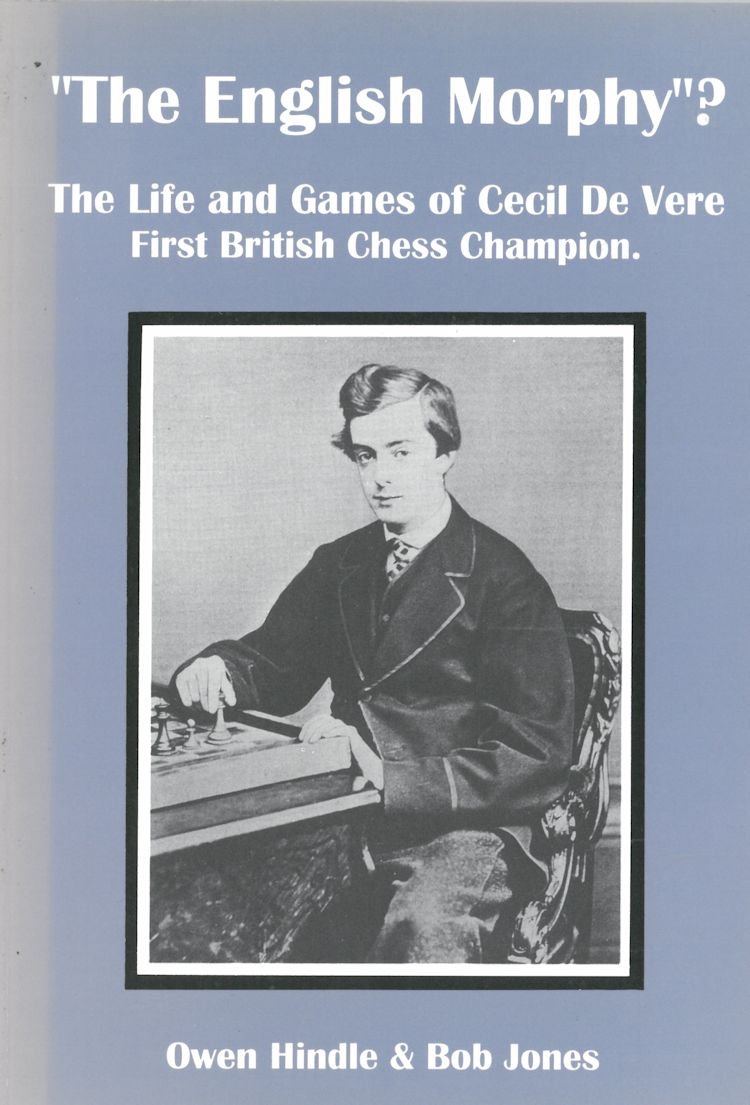
BCN remembers Professor Michael Lipton CMG FBA who passed away on April 1st, 2023 aged 86.
From The Encyclopedia of Chess by Anne Sunnucks :
Michael Lipton is a British problem composer. Born on 13th February 1937, Lipton is a Fellow of All Souls, Oxford and an economist at The University of Sussex.
His 350 problems consist mainly of modern two-movers. His British Chess Problem Society lecture in 1956, The German Two-Mover, led to so great an interest in modern trends that Great Britain was transformed from one of the most backward to one of the most forward countries for the composition of modern two-movers. Lipton, Rice and Barnes were chiefly responsible for this revolution.
Lipton had edited problem sections of Correspondence Chess and the Sunday Citizen. He is co-author with R.C.O. Matthews and J.M.Rice of Chess Problems : Introduction to an Art and co-author with J.M.Rice and B.P.Barnes of The Two Move Chess Problem : Tradition and Development.
From The Encyclopaedia of Chess (Batsford, 1977), Harry Golombek OBE, John Rice writes:
“British problem composer, output about 400, nearly all modern-style two movers. Co-author of Chess Problems: Introduction to an Art (1963) and The Two-move Chess Problem: Tradition and Development (1966). International Master (1976). ”
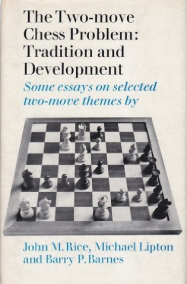
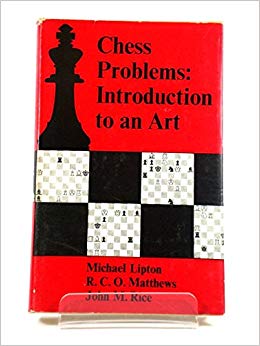
Here we have from the British Chess Problem Society the Michael Lipton Collection
Professor Lipton is perhaps better known for his academic career in economics specialising in rural poverty in developing countries, including issues relating to land reform and urban bias.
Many articles are available on the above including:
From The British Academy
Here is a collection of tributes from friends and colleagues.